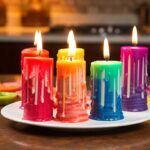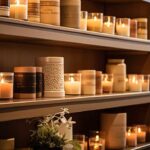Candles
How to Light Candle
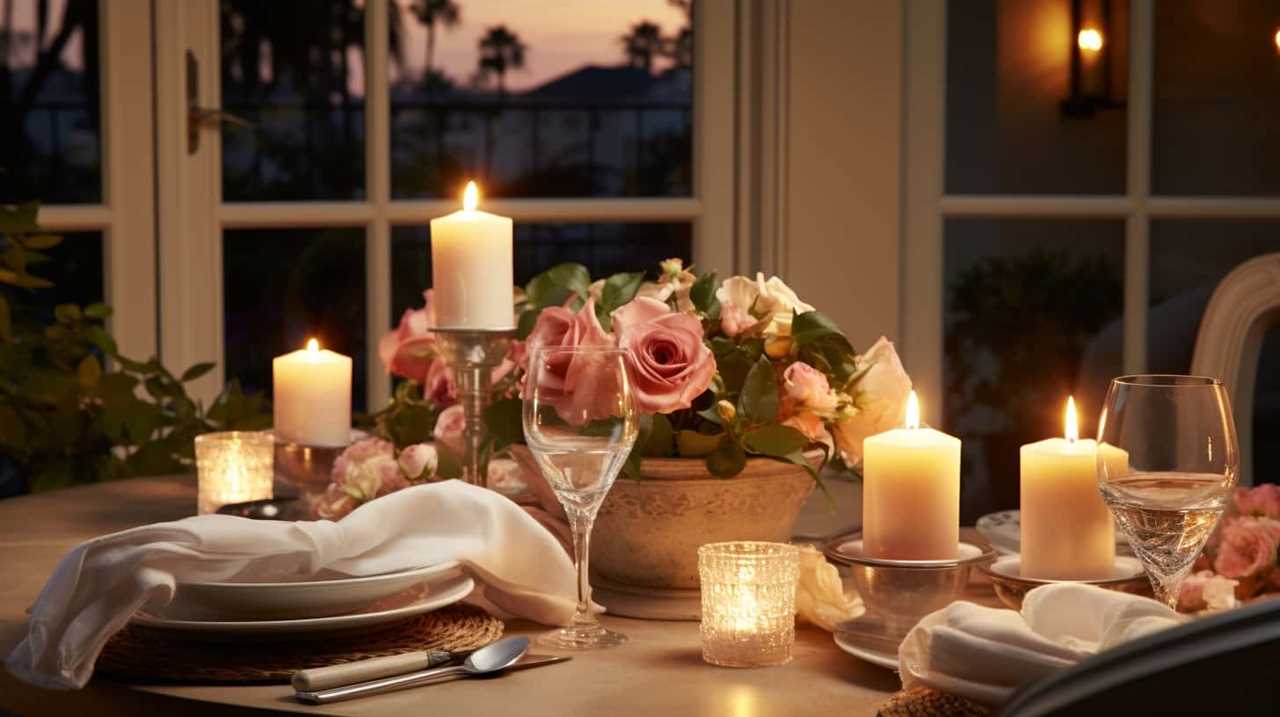
Have you ever been in a completely dark room, searching for a small hint of light to guide you to the way out? Lighting a candle symbolizes finding that spark of optimism in the midst of darkness.
In this guide, we will show you how to light a candle safely and enjoy its warm glow.
First, let’s gather our materials and prepare the candle for lighting.
Then, we’ll find a safe and suitable location with proper ventilation.
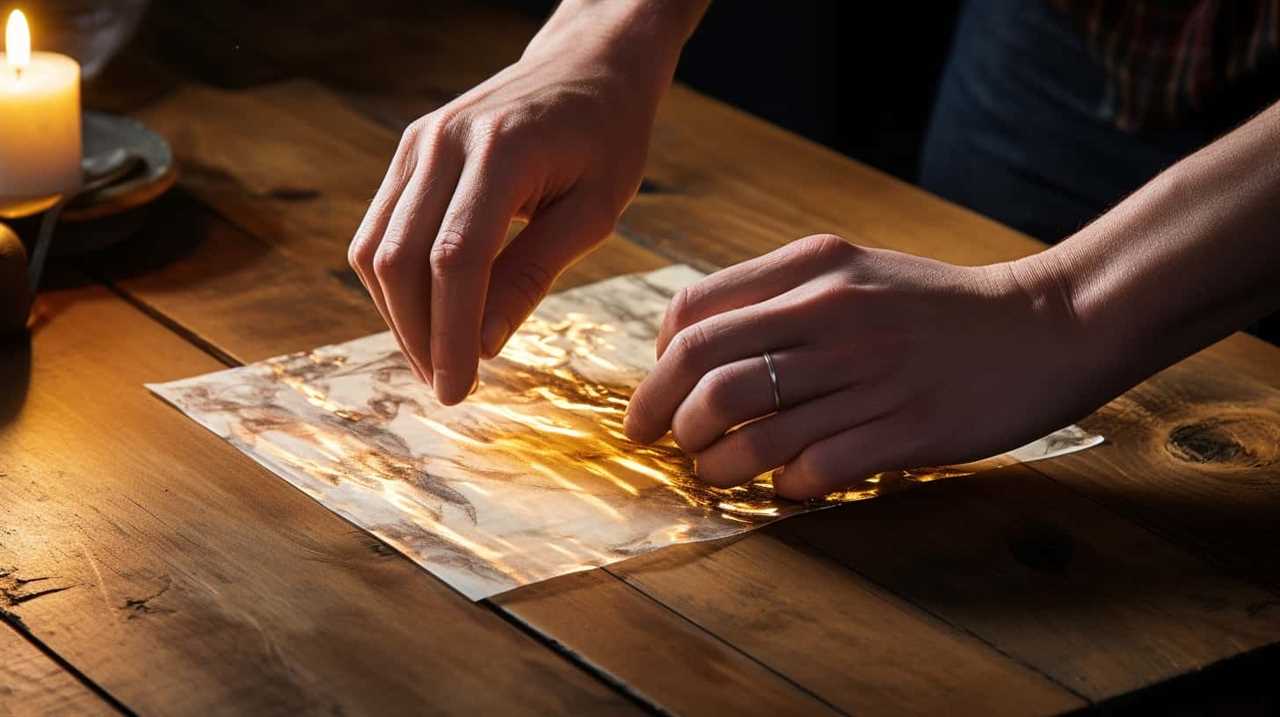
Choosing the right lighting tool is crucial, so we’ll guide you through that process.
Once the flame catches, we’ll teach you how to safely extinguish the match or lighter.
Finally, sit back, relax, and bask in the soothing flickering glow of your candle.
Remember to always practice proper candle safety precautions.
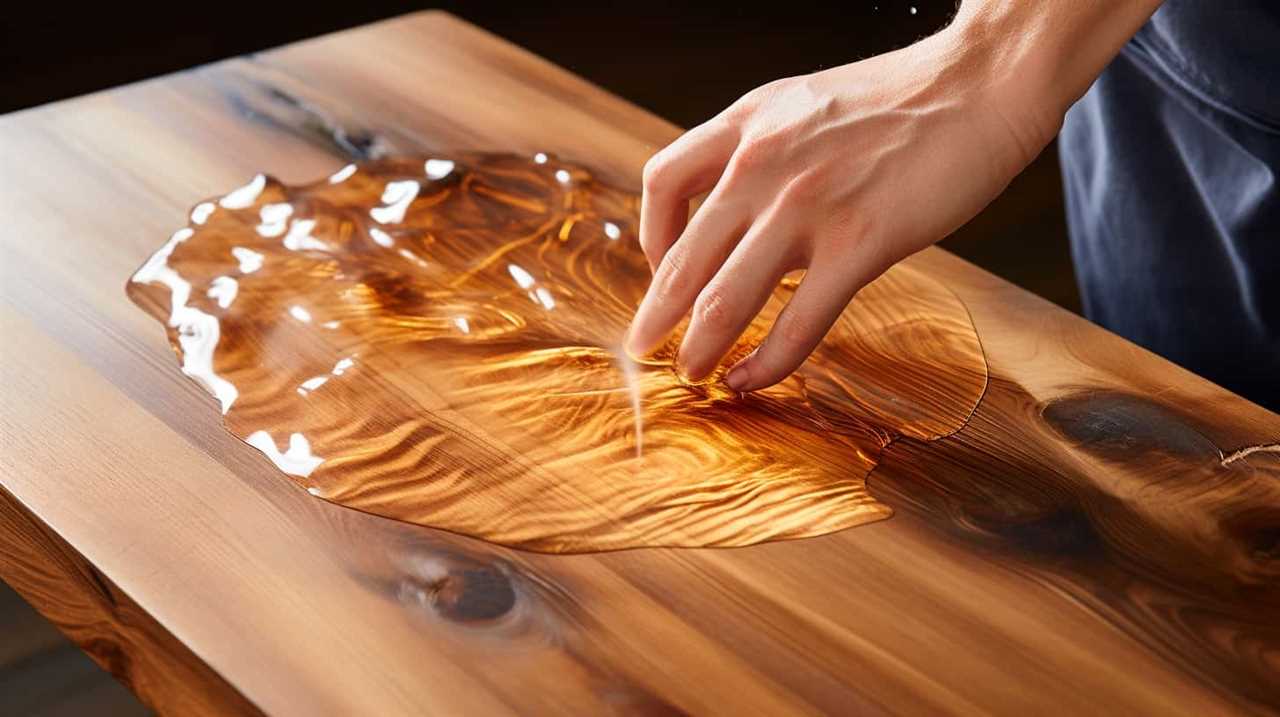
Let’s get started!
Key Takeaways
- Gather the necessary materials for lighting a candle, including a candle, long-reach lighter or matches, candle snuffer, heat-resistant surface, and fire extinguisher or bucket of water.
- Prioritize safety by keeping the candle away from flammable objects, trimming the wick to a quarter of an inch, and having a fire extinguisher nearby.
- Position the candle on a flat and stable surface, away from drafts and other flammable objects, and consider the height of the candle to prevent tipping.
- When lighting the candle, use long-reach lighters or candle lighters, move the flame towards the wick without touching it directly, and practice proper ventilation to prevent fire hazards.
Gather Your Materials
First, we’ll gather all the necessary materials for lighting a candle. Candle maintenance is essential to ensure a safe and enjoyable experience. To begin, select the right candle for your needs. Consider factors such as size, scent, and burn time.
Next, gather a lighter or matches for ignition. Opt for long-reach lighters to avoid burning your fingers. Additionally, a candle snuffer is useful for extinguishing the flame without creating smoke or hot wax splatters.
Remember to keep a heat-resistant surface, like a tray or candle holder, to protect your furniture. Lastly, always have a fire extinguisher or a bucket of water nearby for emergencies.
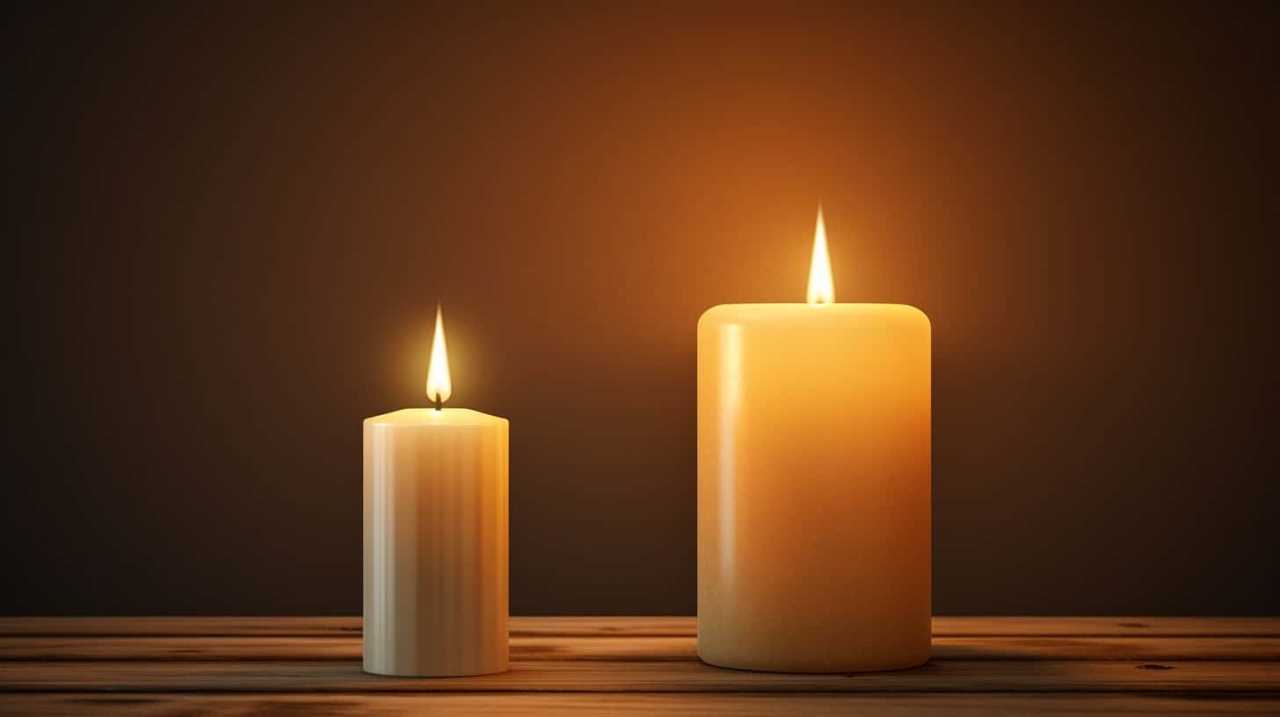
Prepare the Candle for Lighting
Now that we’ve gathered our materials, let’s prepare the candle for lighting.
There are a few candle positioning tips to keep in mind, such as placing the candle on a heat-resistant surface and away from any flammable objects.
Additionally, it’s important to trim the wick to a quarter of an inch before lighting to ensure a clean and even burn.
Lastly, we must always prioritize safety by keeping a fire extinguisher nearby and never leaving a lit candle unattended.
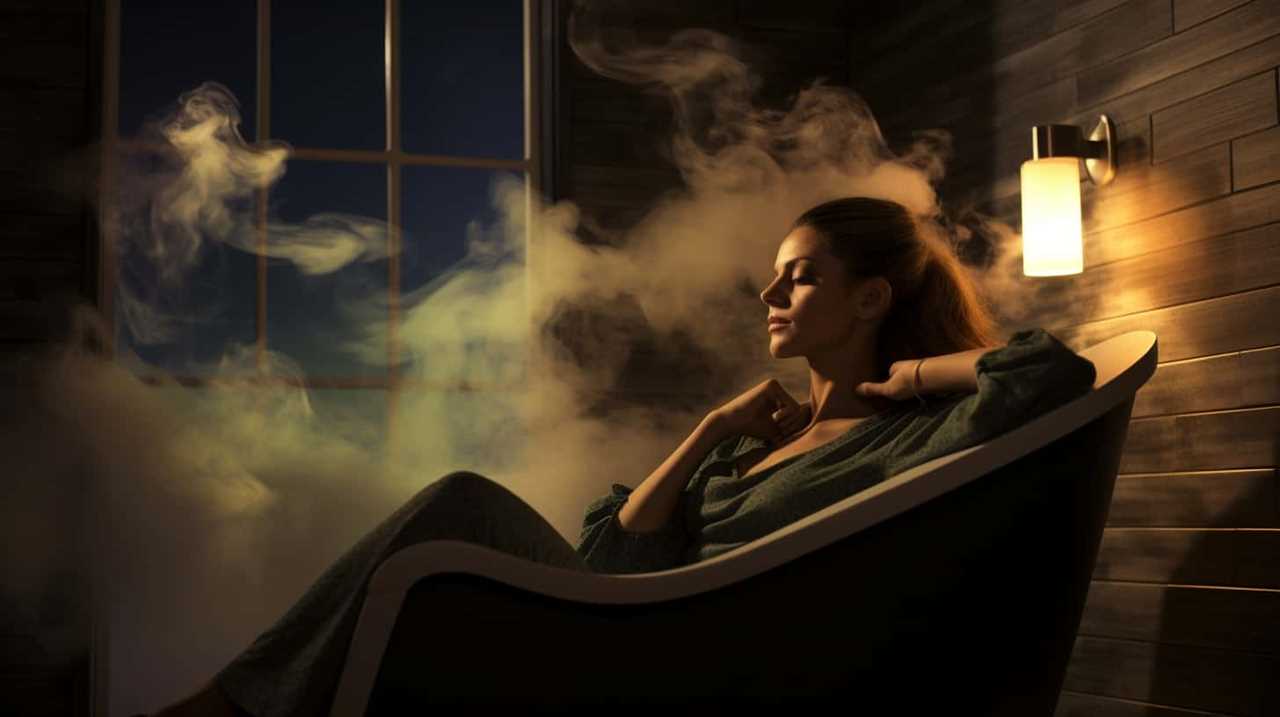
Candle Positioning Tips
To ensure proper candle positioning, we carefully select an appropriate location and place the candle securely before lighting it.
When it comes to candle placement, it’s important to consider safety and aesthetics. First, choose a flat and stable surface that’s heat-resistant and far from flammable objects. Avoid placing candles near curtains, paper, or furniture that can easily catch fire.
Additionally, ensure that the candle is positioned away from drafts to prevent it from flickering or extinguishing prematurely. If you’re lighting multiple candles, make sure they’re spaced apart to avoid any accidents.
Lastly, consider the height of the candle. If you’re using a tall candle, ensure that it’s positioned in a way that won’t obstruct the line of sight or pose a risk of tipping over.

Importance of Wick Trimming
After carefully selecting an appropriate location and ensuring proper candle positioning, the next step in preparing the candle for lighting involves trimming the wick to the correct length. Wick maintenance is essential for optimal candle burning.
When a wick is too long, it can cause the flame to become too large and produce excess smoke. On the other hand, if the wick is too short, it may have difficulty staying lit. To trim the wick, simply use a pair of scissors or a wick trimmer and cut it to about 1/4 inch in length. This length allows for a steady and controlled flame, ensuring a clean and even burn.
By maintaining the wick length, you can enhance the overall candle burning experience.
Now that the wick is properly trimmed, let’s move on to the next step: safety precautions when lighting.

Safety Precautions When Lighting
When preparing to light a candle, it’s important to take safety precautions to ensure a secure and enjoyable experience. Here are three essential steps to follow:
- Choose a stable surface: Find a flat and heat-resistant surface to place your candle on. This will prevent it from tipping over and causing a fire hazard.
- Keep flammable objects away: Make sure to clear the area around the candle from any flammable materials such as curtains, papers, or decorations. This will minimize the risk of accidental fires.
- Use proper candle lighting techniques: Instead of using matches, consider using a long-reach lighter or a candle lighter. This will help you maintain a safe distance from the flame and reduce the risk of burns.
Find a Safe and Suitable Location
Choosing a safe and suitable location is crucial for lighting a candle. Proper candle placement ensures that the flame is away from any flammable materials, reducing the risk of accidents. It’s important to place the candle on a stable and heat-resistant surface, such as a ceramic plate or a candle holder. Avoid placing the candle near curtains, papers, or any other items that can easily catch fire.
Additionally, ensure that the candle is placed in a suitable environment. Avoid areas with drafts or strong air currents, as they can cause the flame to flicker or even blow out.
Now that we’ve discussed how to find a safe location, let’s move on to the next step: ensuring proper ventilation.
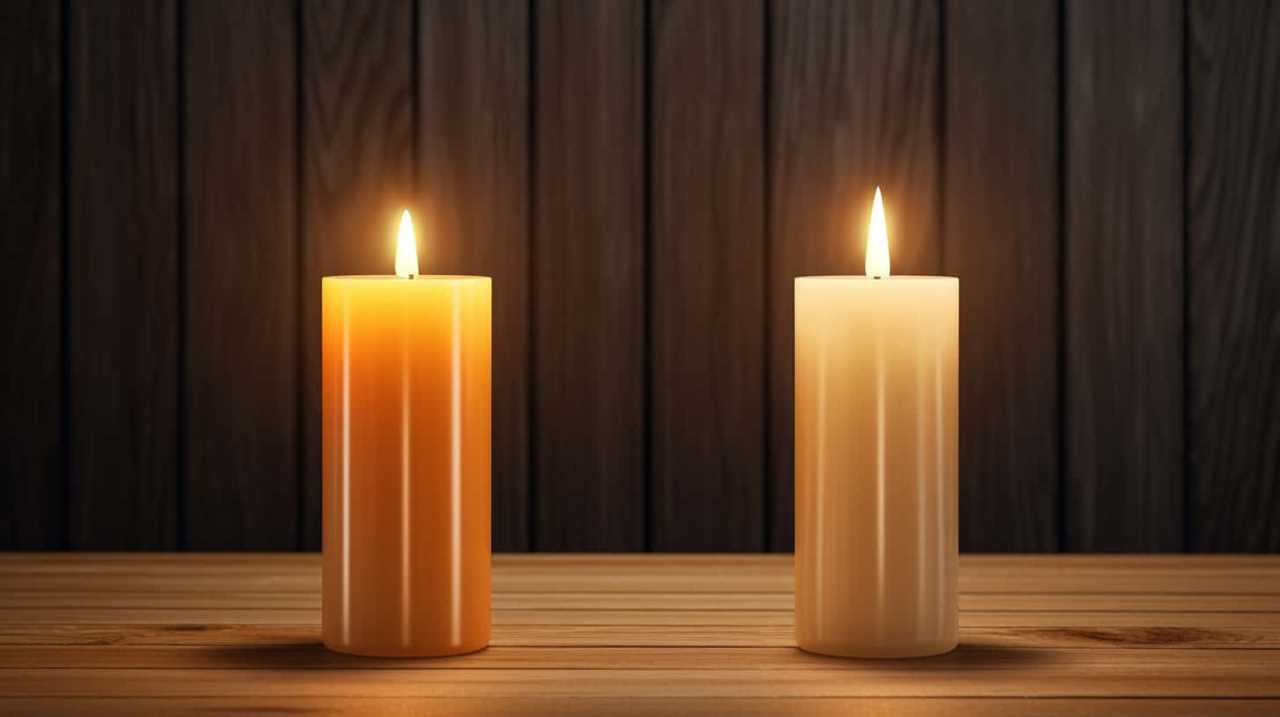
Ensure Proper Ventilation
To ensure a safe and well-lit environment, we always make sure to provide proper ventilation when lighting a candle. Proper ventilation is crucial for maintaining air quality and preventing the buildup of harmful gases. Here are three reasons why ventilation is important when lighting a candle:
- Safety: Adequate ventilation helps prevent the accumulation of flammable gases, reducing the risk of fire hazards.
- Air Quality: Ventilation ensures that the air remains fresh and free from the smoke and soot produced by the candle, promoting a healthier living space.
- Odor Control: Good airflow helps dissipate any unpleasant odors that may arise from burning candles, keeping the room smelling fresh.
When it comes to safety measures, ensure that the room is well-ventilated by opening windows or using fans to circulate the air. This will help maintain a safe and comfortable atmosphere while enjoying the warm glow of a candle.
Now let’s move on to the next step: choosing the right lighting tool.
Choose the Right Lighting Tool
We prefer using a lighter to ignite the candle flame. Lighting techniques vary, but a lighter offers convenience and precision.
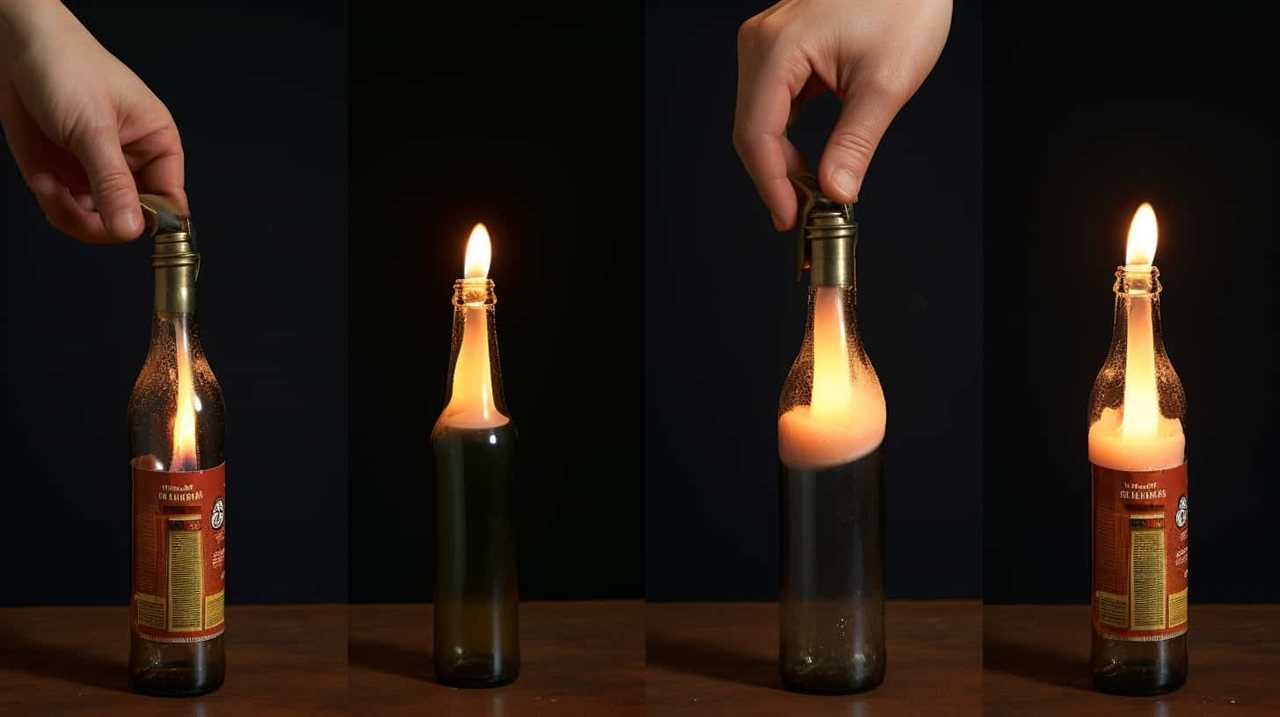
When choosing the right lighting tool, it’s important to consider proper equipment. A lighter provides a steady flame that can easily ignite the wick without the risk of damaging the candle. Other lighting tools, such as matches, may have a shorter flame that can go out before fully lighting the candle. Additionally, matches can leave behind residue that may affect the burning process.
Hold the Match or Lighter Correctly
For an optimal candle lighting experience, it’s crucial to hold the match or lighter correctly. Proper hand positioning and flame management are essential to ensure a safe and successful lighting process. Here are three key tips to help you master this skill:
- Hand Positioning: Hold the match or lighter firmly between your thumb and index finger, ensuring a stable grip. Keep your hand steady and at a safe distance from the flame.
- Proper Flame Management: When using a match, strike it firmly against the matchbox, creating a strong flame. For lighters, ensure that the flame is adjusted to an appropriate height, neither too high nor too low.
- Maintain Control: Always keep your hand steady while bringing the flame towards the candle wick. Avoid sudden movements or jerks that may extinguish the flame or cause accidents.
Approach the Candle With Caution
With the match or lighter held securely, we must now approach the candle with caution. It’s important to prioritize safety when handling open flames.
As we approach the candle, we should be mindful of a few handling precautions. First, ensure that there are no flammable objects nearby that may catch fire. Keep a safe distance from curtains, papers, or any other combustible materials.

Second, be aware of your surroundings and make sure there are no obstructions or hazards that may cause you to trip or knock over the candle.
Lastly, approach the candle slowly and steadily, avoiding any sudden movements that may cause the flame to flicker or ignite nearby objects. By approaching the candle with caution, we can minimize the risk of accidents and ensure a safe lighting process.
Now, let’s move on to the next step: lighting the match or lighter.
Light the Match or Lighter
To begin lighting the candle, we typically grab a match or lighter and gently flick it to create a flame.
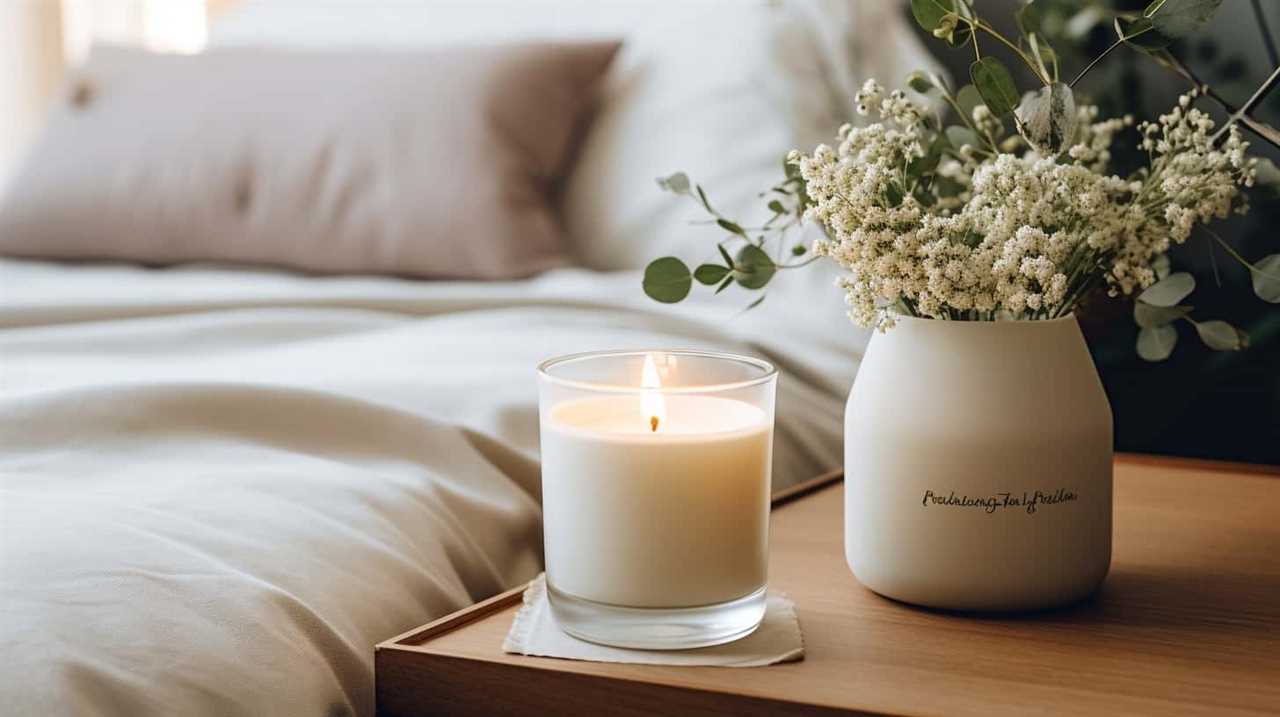
Here are some important things to keep in mind regarding match safety and lighter maintenance:
- Match safety:
- Always handle matches with caution to avoid accidents.
- Make sure to keep them away from flammable materials and store them in a dry and secure place.
- After lighting the candle, extinguish the match completely by running it under water or placing it in a designated fireproof container.
- Lighter maintenance:
- Regularly check the fuel level in your lighter and refill it when necessary.
- Clean the ignition mechanism to ensure a consistent flame.
- If you’re using a disposable lighter, dispose of it properly when it’s empty to prevent environmental harm.
Now that we understand match safety and lighter maintenance, let’s move on to the next step of bringing the flame close to the wick.
Bring the Flame Close to the Wick
As we approach the candle, we carefully bring the flame close to the wick, ensuring a controlled and steady ignition. This step is crucial for effectively lighting the candle and maintaining the wick for future use.
Before bringing the flame near the wick, it’s important to ensure that the wick is properly trimmed to about 1/4 inch in length. This wick maintenance not only promotes a cleaner and brighter flame but also reduces the risk of excessive smoke and soot.

Additionally, it’s essential to prioritize fire safety during this process. Keep flammable objects away from the candle, and never leave it unattended while lit.
Watch for the Flame to Catch
Now that we’ve brought the flame close to the wick, the next step is to watch for the flame to catch. This is an important moment in the process, as it determines whether or not the candle will ignite successfully.
To ensure safety, it’s crucial to follow certain precautions when lighting a candle and be aware of common mistakes to avoid. By employing the best techniques for success, we can achieve a beautiful and safe candle lighting experience.
Safety Precautions When Lighting
Before we light a candle, it’s important to ensure our safety by watching for the flame to catch. Here are some safety precautions to consider:

- Wick maintenance: Before lighting the candle, trim the wick to about ¼ inch to prevent excessive flickering and large flames that can lead to accidents.
- Fire prevention: Keep flammable objects at a safe distance from the candle. Avoid placing candles near curtains, papers, or any other combustible materials.
- Supervision: Never leave a burning candle unattended. Always extinguish it before leaving the room or going to sleep.
By following these safety precautions, we can minimize the risk of accidents and enjoy the cozy ambiance candles provide.
Now let’s move on to the next section where we’ll discuss common mistakes to avoid when lighting candles.
Common Mistakes to Avoid
Our first step in avoiding common mistakes when lighting a candle is to ensure that we watch for the flame to catch. One of the most common mistakes people make isn’t giving the flame enough time to catch and instead, they quickly release the match or lighter. This can result in the flame extinguishing before the candle is lit.
To avoid this, it’s important to hold the match or lighter steady for a few seconds after igniting it, allowing the flame to fully develop and catch onto the candle wick. By doing so, you can ensure that the candle is properly lit and will continue to burn safely.
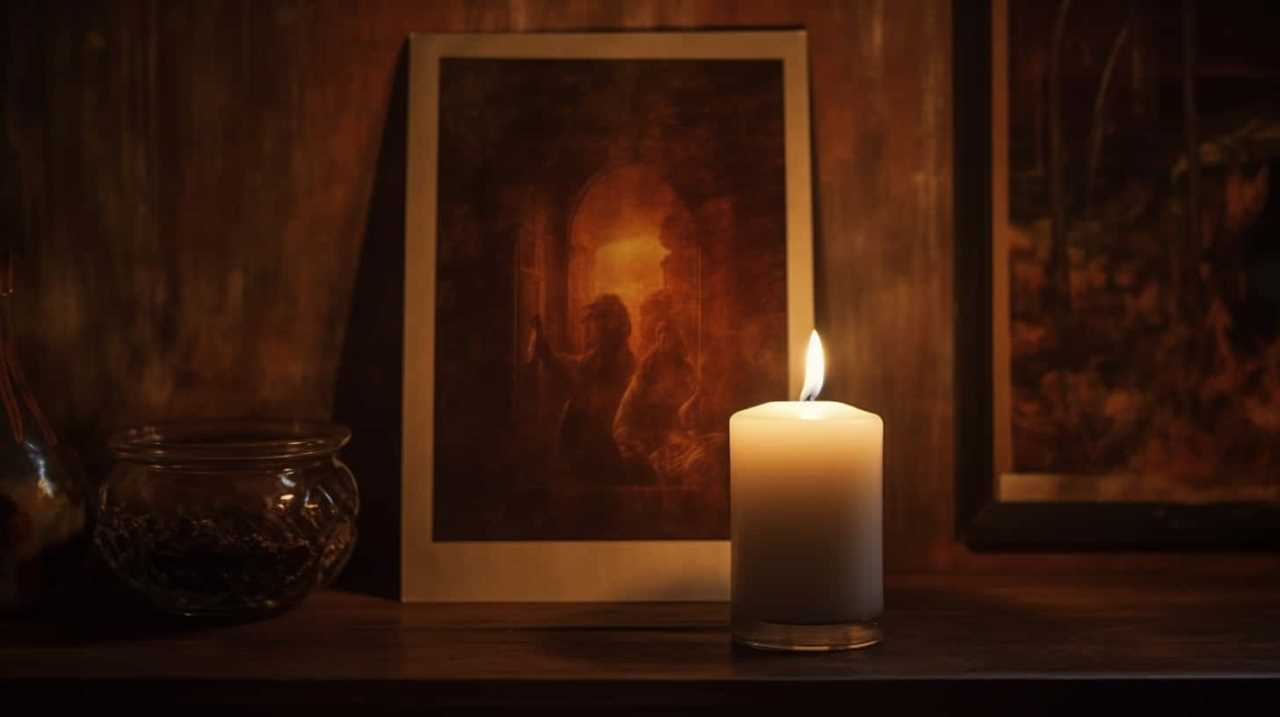
Now that we know the common mistakes to avoid, let’s move on to the best techniques for success in lighting a candle.
Best Techniques for Success
To ensure success in lighting a candle, we need to watch for the flame to catch. Here are the best techniques for achieving success:
- Hold the match or lighter slightly above the candlewick and tilt it at a slight angle towards the wick. This will allow the flame to easily transfer to the wick.
- Gently strike the match or ignite the lighter, ensuring that the flame is strong and steady. A weak flame mightn’t catch the wick properly.
- Slowly move the flame towards the wick, being careful not to touch the flame directly to the wick. Allow the heat of the flame to ignite the wick and start the candle burning.
By following these techniques, you can increase your chances of successfully lighting a candle.
Now, let’s move on to the next step: safely extinguishing the match or lighter.

Safely Extinguish the Match or Lighter
After lighting the candle, we should carefully extinguish the match or lighter to prevent any accidents or fire hazards. Match safety is crucial in this step. It’s important to wait until the match has completely cooled down before discarding it.
Never blow out a match, as it can send hot embers flying and potentially ignite nearby objects. Instead, gently and firmly press the match head against a non-flammable surface, such as the base of the candle or a ceramic plate, until it’s completely extinguished.
When it comes to lighter handling, always ensure that the flame is completely out before putting it away. Double-check by turning off the gas or closing the lid, if applicable.
Enjoy the Flickering Glow of Your Candle
Once the match or lighter has been safely extinguished, we can now sit back and enjoy the mesmerizing flickering glow of our candle. The warm and gentle illumination not only enhances the ambiance of any space but also offers a multitude of benefits.

Here are three reasons why you should take the time to appreciate the beauty of your candle:
- Candle decor ideas: The flickering flame adds a touch of elegance and coziness to any room. You can use candles to create stunning centerpieces, add a romantic atmosphere to a dinner table, or bring a sense of tranquility to your bedroom.
- Benefits of candle meditation: The soft glow of a candle can help you relax and focus your mind during meditation. By gazing at the flame, you can enter a state of deep calmness, reduce stress, and promote mindfulness.
- Aromatherapy: Many candles come in scented varieties, allowing you to enjoy the benefits of aromatherapy. The soothing scents of lavender, vanilla, or citrus can uplift your mood, relieve anxiety, and create a peaceful environment.
Practice Proper Candle Safety Precautions
Now, let’s ensure the safety of our candle by following proper precautions.
Candle maintenance is an essential aspect of fire safety. Before lighting a candle, ensure that it’s placed on a stable and heat-resistant surface. Keep the candle away from flammable materials such as curtains, paper, or furniture.
Trim the wick to a quarter of an inch to prevent excessive smoking and to maintain a clean, even burn. When the candle is burning, never leave it unattended, and keep it away from children and pets.
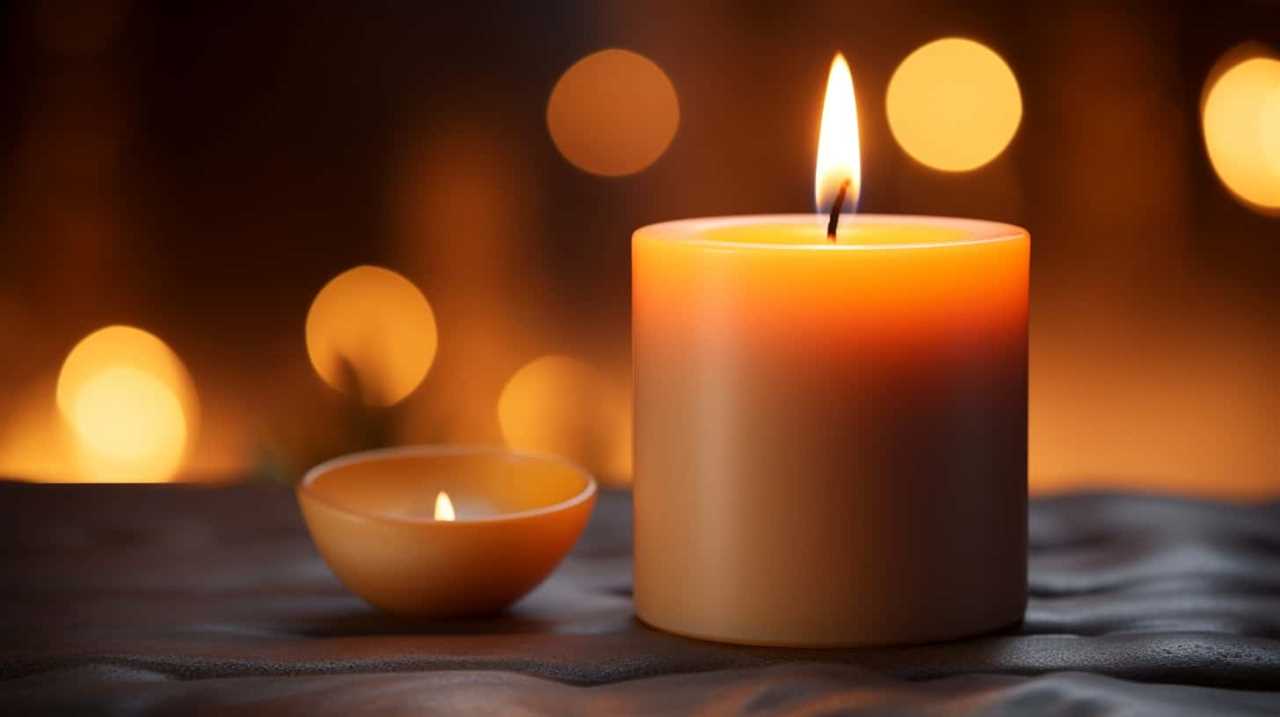
Always extinguish the candle before leaving the room or going to sleep. Use a candle snuffer or gently blow out the flame, avoiding any wax splattering.
Frequently Asked Questions
How Can I Prevent the Candle From Burning Too Quickly?
To prevent the candle from burning too quickly, we can take some steps to ensure proper candle care. This includes trimming the wick to a quarter-inch before each use and keeping the candle away from drafty areas.
Can I Use Any Type of Match or Lighter to Light the Candle?
Yes, you can use any type of match or lighter to light the candle. However, it is important to remember to follow safety precautions while lighting a candle, such as keeping flammable objects away and never leaving a lit candle unattended.
Is It Safe to Leave a Lit Candle Unattended?
Leaving a lit candle unattended can be a fire hazard. To ensure safety, always extinguish the flame before leaving the room. Place candles on stable surfaces, away from flammable objects, and never leave them within reach of children or pets.
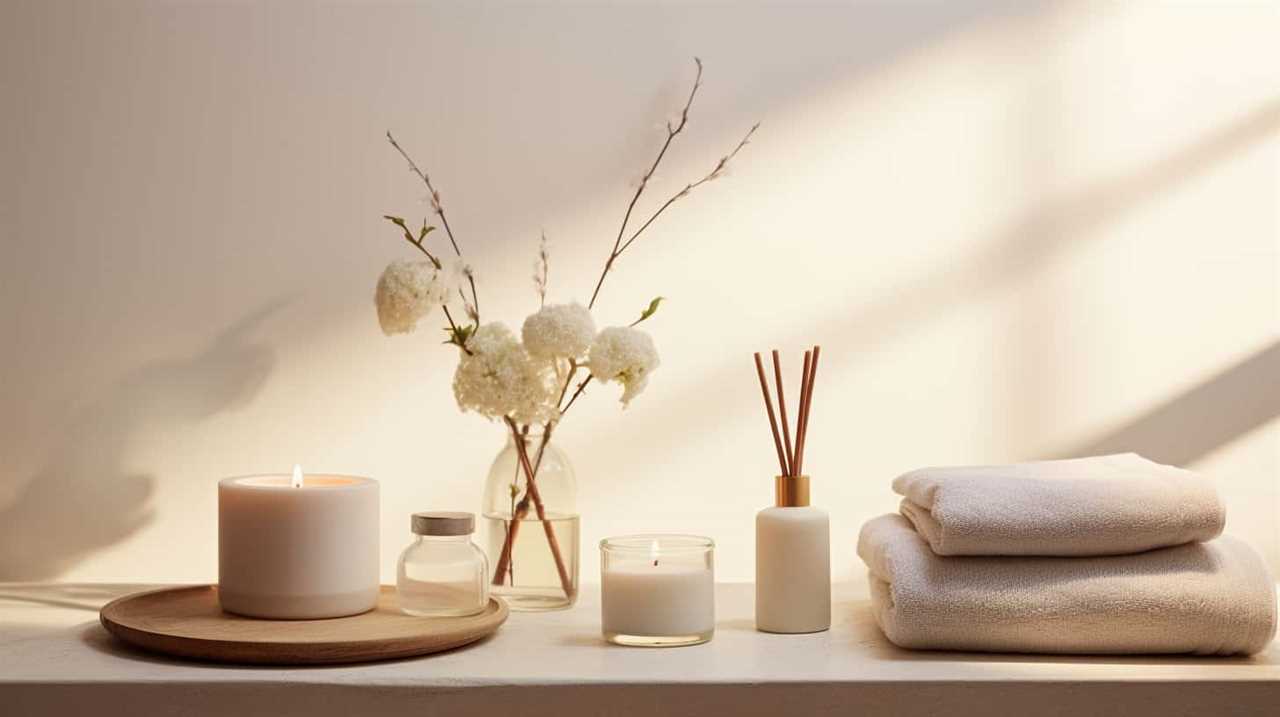
What Should I Do if the Flame of the Candle Becomes Too Large?
If the flame of the candle becomes too large, we need to practice flame management for fire safety. It’s important to have a fire extinguisher nearby and carefully use it to put out the flame.
How Often Should I Trim the Wick of the Candle?
When it comes to wick maintenance, it’s important to trim it regularly to ensure optimal candle burning speed. By doing so, you can prevent the flame from becoming too large and ensure a safe and enjoyable candle experience.
Conclusion
After following these simple steps, we can safely enjoy the serene glow of a lit candle.
Did you know that candles are responsible for over 15,000 house fires each year in the United States alone?
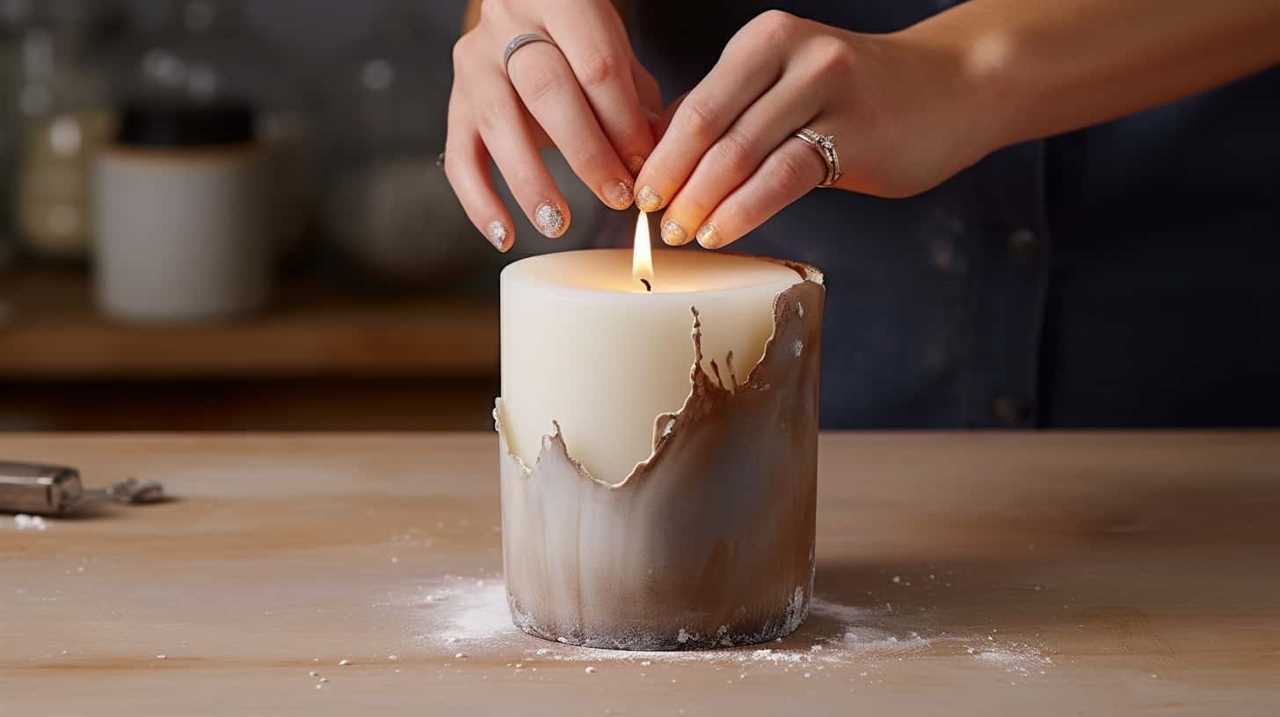
By practicing proper candle safety precautions, we can prevent these devastating accidents and create a peaceful ambiance in our homes.
So let’s light our candles with care and cherish the beautiful moments they bring.
Stay safe and enjoy the flickering glow!
I’m Jane and I love candles. I have candles everywhere in my house–in every room, on every surface. I love the smell of candles, and I love how they make my place feel warm and cozy.
Candles are really important to me. They help me relax and de-stress after a long day. They remind me of happy memories, and they make me feel calm and peaceful. I can’t imagine my life without candles!
Candles
What Is the Melting Point of Candle Wax

Wondering about the specific temperature at which candle wax melts? You’re in for a treat as we have the answer right here!
Understanding the melting point of candle wax is crucial for those who want to create the perfect candles for their loved ones or customers. Different types of candle wax have different melting points, and knowing these points can make a big difference in the quality of your candles.
For instance, let’s take the example of paraffin wax. Its melting point is around 130 to 140 degrees Fahrenheit. By understanding and testing the melting points of various waxes, you can ensure that your candles burn evenly and last longer.
So, let’s dive into the fascinating world of candle wax melting points and discover how it can elevate your candle-making skills!
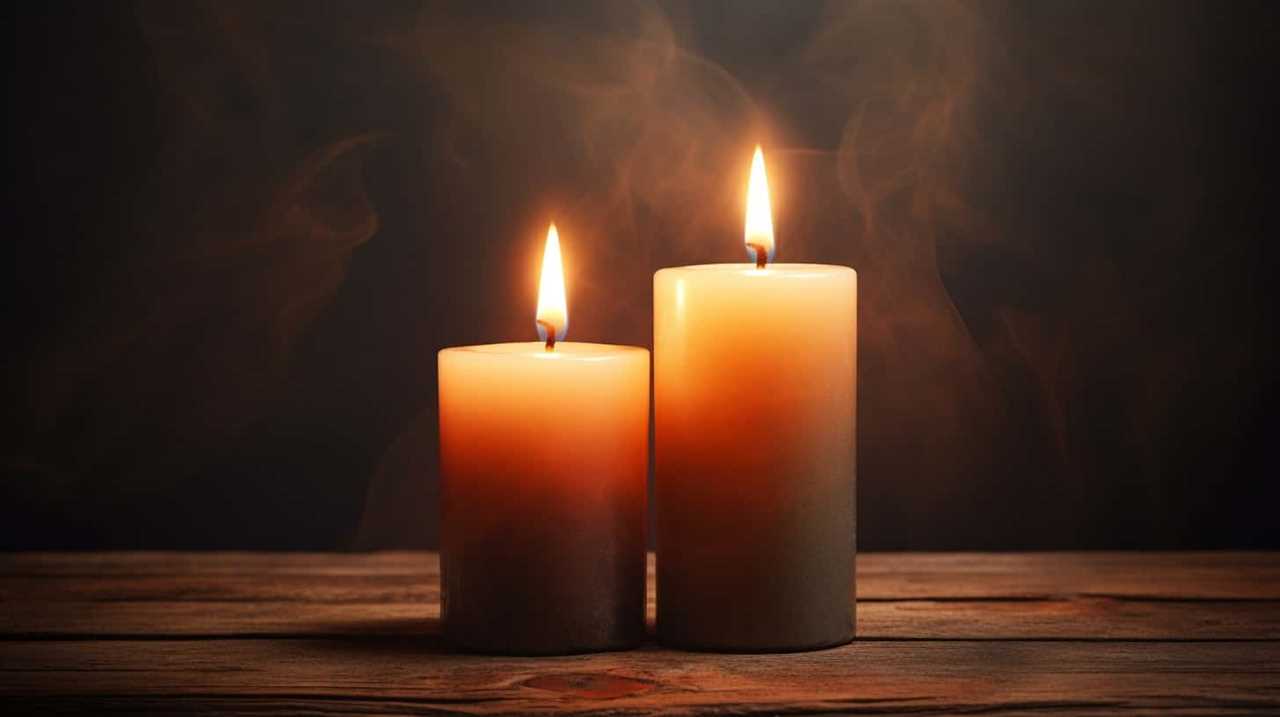
Key Takeaways
- The melting point of candle wax is the temperature at which it transitions from a solid to a liquid state.
- The melting point is important in determining the quality, performance, and behavior of candles.
- Different types of candle wax have different melting points, which affect factors such as burn time and fragrance release.
- Factors that influence the melting point of candle wax include the composition of the wax, heat source, impurities, additives, and container size and shape.
What Is Melting Point
The melting point is the temperature at which a substance transitions from a solid to a liquid state. It’s an important characteristic of a substance, as it helps determine its physical properties and behavior.
Temperature control is crucial in various industries where accurate melting points are required for manufacturing processes. For example, in the pharmaceutical industry, knowing the melting point of a drug substance is essential to ensure its stability and effectiveness.
Impurities can have a significant impact on the melting point of a substance. Even small amounts of impurities can lower the melting point, affecting the integrity and quality of the final product. Therefore, maintaining proper temperature control and minimizing impurities are vital in order to ensure consistent and reliable results in various applications.
Importance of Melting Point for Candles
In our experience with candle making, we’ve found that the melting point of candle wax plays a crucial role in determining the quality and performance of the final product. The importance of temperature control can’t be overstated when it comes to candle making.
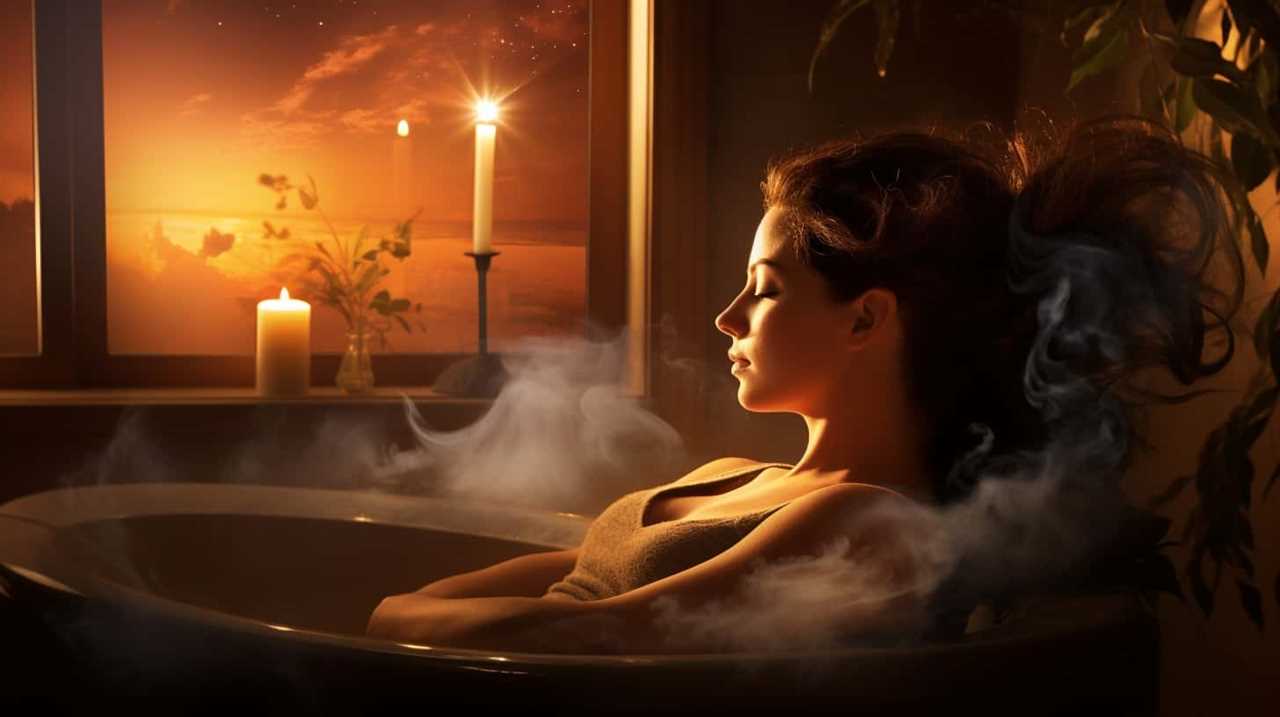
When the wax is melted at the correct temperature, it ensures that the fragrance oils are properly dispersed and that the candle burns evenly and cleanly. If the wax is overheated, it can result in poor scent throw and a weaker fragrance. On the other hand, if the wax isn’t heated enough, the candle may not burn properly or may have a shorter burn time.
Additionally, the melting point of the wax can be affected by the use of additives, such as colorants or fragrance oils. These additives can alter the wax’s melting point, so it’s important to carefully consider their effects when formulating candle recipes.
Types of Candle Wax
When it comes to candle making, we rely on different types of candle wax depending on our specific needs and preferences. Here are four types of candle wax commonly used:
- Paraffin Wax: This petroleum-based wax is widely used due to its affordability and versatility. It has a high melting point, which makes it ideal for creating strong and long-lasting candles.
- Soy Wax: Made from soybean oil, this natural wax is a popular choice among environmentally conscious individuals. It has a lower melting point compared to paraffin wax, resulting in a slower and cleaner burn.
- Beeswax: Derived from bees, this natural wax is known for its sweet scent and golden hue. It has a higher melting point and produces a warm, soft glow when burned.
- Palm Wax: Made from palm oil, this renewable wax has a unique crystalline structure that gives candles a beautiful feathered appearance. It has a moderate melting point and provides excellent scent throw.
Understanding the differences between paraffin wax vs soy wax and beeswax vs palm wax allows us to choose the right type of candle wax for our specific needs, whether it’s for fragrance, sustainability, or aesthetic purposes.
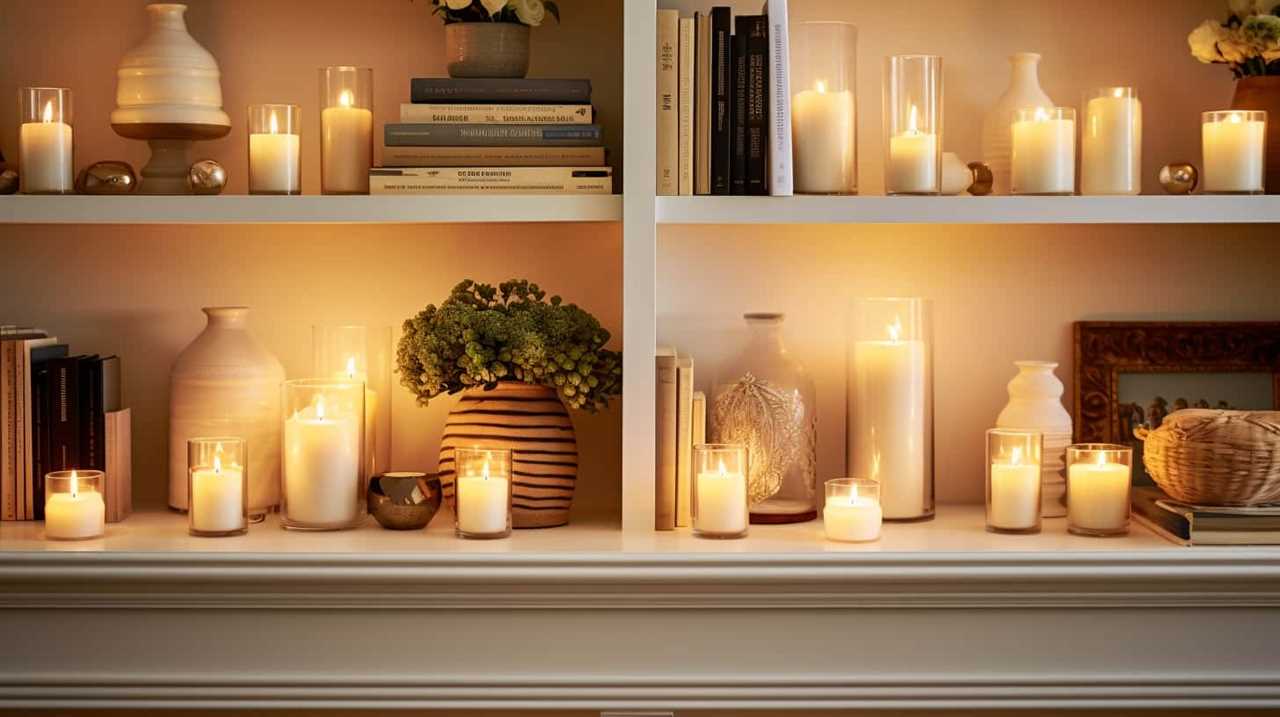
Factors Affecting Melting Point
To understand the factors affecting the melting point of candle wax, we need to consider various elements that play a role in determining this characteristic.
One crucial factor is the composition of the candle wax. Different types of wax, such as paraffin, beeswax, or soy wax, have different melting points due to variations in their chemical composition. For example, paraffin wax has a lower melting point compared to beeswax, making it easier to melt.
Another factor that influences the melting point is the heat source. The temperature and intensity of the heat source can significantly affect the melting point of the wax. A higher heat source will increase the rate of heat transfer, causing the wax to melt at a lower temperature.
Therefore, understanding the candle wax composition and the influence of the heat source is essential in determining the melting point of candle wax.
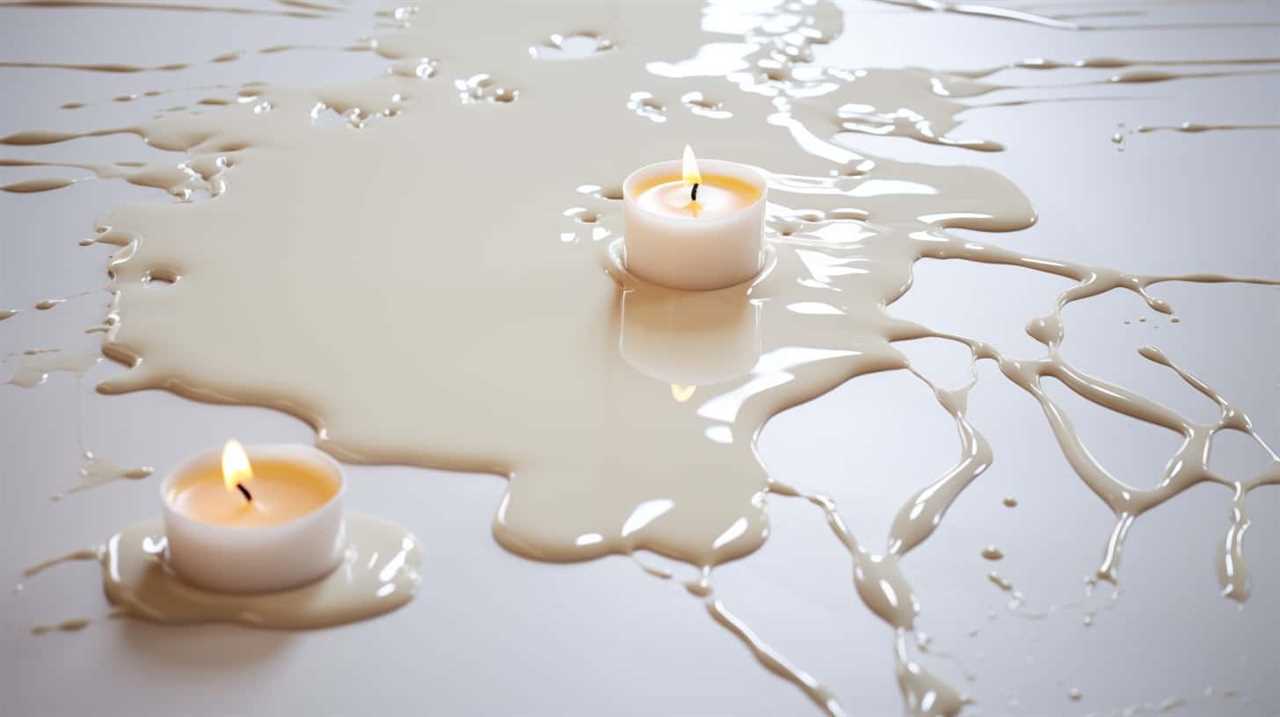
Paraffin Wax and Its Melting Point
When considering the melting point of paraffin wax, it’s important to analyze the factors that affect it. These factors include the molecular structure, purity of the wax, and any additives present.
Additionally, comparing the melting points of different waxes can provide valuable insights into their composition and applications.
Factors Affecting Melting Point
Our research has revealed several factors that influence the melting point of paraffin wax. These factors include:
- Impurities: The presence of impurities, such as additives or contaminants, can lower the melting point of paraffin wax. Higher purity wax tends to have a higher melting point.
- Crystalline Structure: The crystalline structure of paraffin wax can vary depending on factors like the length of the hydrocarbon chain. Waxes with longer chains tend to have higher melting points.
- Molecular Weight: The molecular weight of the wax molecules also affects the melting point. Higher molecular weight waxes generally have higher melting points.
- Temperature Range: The temperature range over which paraffin wax melts can vary depending on the specific formulation and purpose. Different types of paraffin waxes may have different melting points and melting temperature ranges.
Understanding these factors can help in selecting the appropriate paraffin wax for specific applications, ensuring optimal performance and usability.
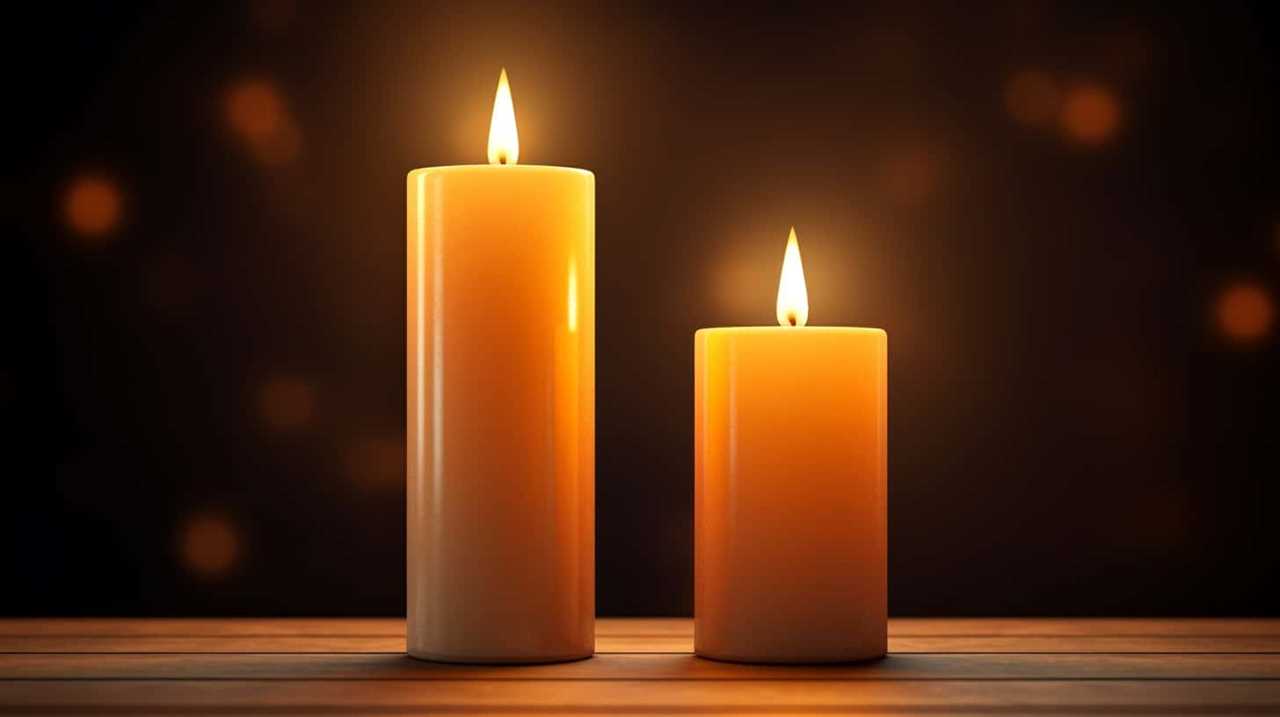
Comparing Different Waxes
We will compare the melting point of paraffin wax to that of other waxes. Comparing melting points is important because it directly affects the performance of a candle.
Paraffin wax, which is derived from petroleum, has a melting point between 120°F and 160°F (49°C to 71°C). This relatively low melting point allows the wax to liquefy quickly when the candle is lit, ensuring a consistent and even burn. Paraffin wax also has a high fragrance capacity, making it a popular choice for scented candles.
Other waxes, such as beeswax and soy wax, have higher melting points. Beeswax melts between 144°F and 147°F (62°C to 64°C), while soy wax melts between 120°F and 180°F (49°C to 82°C). The melting point of a wax can impact the candle’s ability to release fragrance and its overall burn time.
Transitioning to the subsequent section, we’ll now explore soy wax and its melting point.
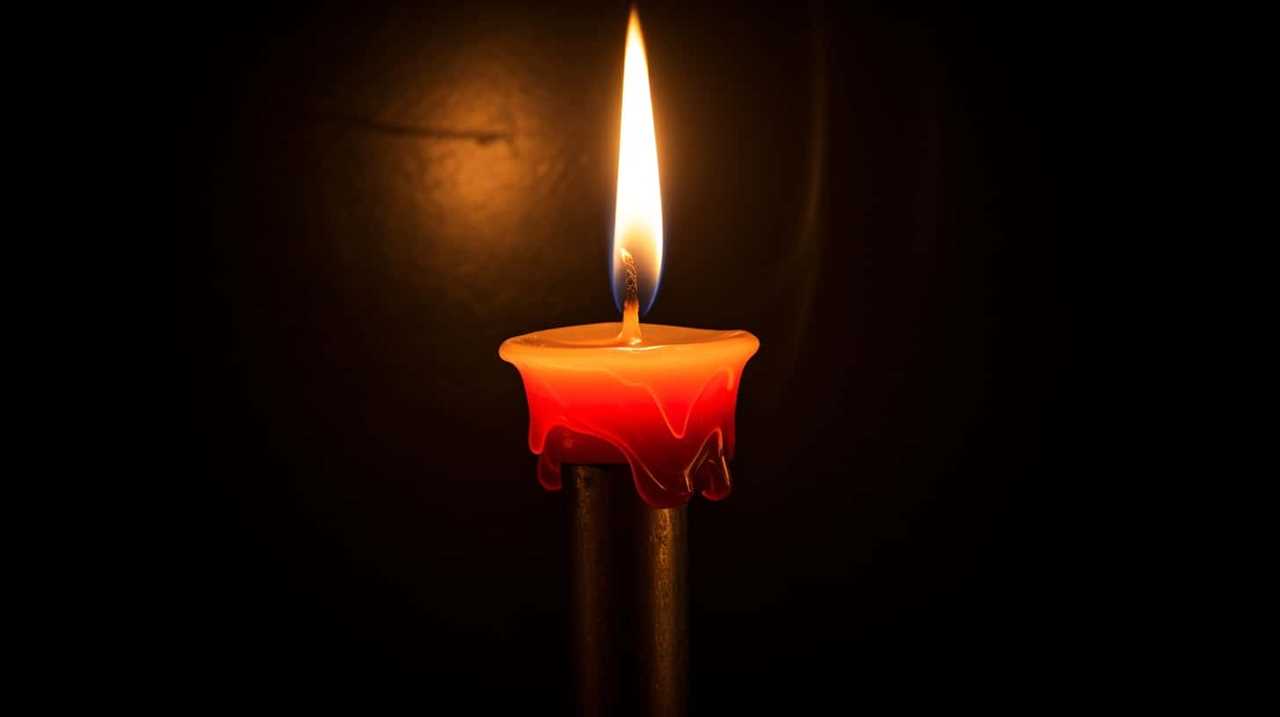
Soy Wax and Its Melting Point
Soy wax has a melting range of approximately 120 to 180 degrees Fahrenheit, making it a suitable choice for candle making.
The melting point of soy wax can be influenced by various factors such as the specific blend of oils used and any additives included.
When compared to other waxes, soy wax tends to have a lower melting point, allowing for a longer burning time and a more gradual release of fragrance.
Soy Wax Melting Range
Typically, soy wax melts at a relatively low temperature, often requiring frequent monitoring during the melting process.
Some key properties of soy wax that contribute to its melting range include:
- Low melting point: Soy wax has a melting point range of around 115 to 125 degrees Fahrenheit (46 to 52 degrees Celsius). This low melting point allows it to melt easily and evenly when exposed to heat.
- Slow cooling: Soy wax has the advantage of a slow cooling process, which results in a longer burning time for candles made from this wax.
- Clean burning: Soy wax is known for its clean and soot-free burn, making it a popular choice for those concerned about air quality.
- Compatibility with fragrance oils: Soy wax has a high fragrance load capacity, allowing it to hold and release scents effectively.
Understanding the melting range of soy wax is crucial for candle makers and enthusiasts to ensure proper melting and pouring techniques, ultimately resulting in high-quality candles.

Factors Affecting Melting
Frequently, candle makers and enthusiasts encounter various factors that influence the melting point of soy wax. These factors can have a significant impact on candle performance and efficiency.
One of the key factors affecting the melting point of soy wax is the type of additives used. Certain additives, such as stearic acid or vybar, can raise the melting point of the wax, making it more suitable for specific candle types or environments.
The purity of the soy wax also plays a role, as impurities can lower the melting point and affect the overall quality of the candle.
Additionally, the container size and shape can influence the melting point, as larger containers may require higher melting points to ensure proper scent throw and burn time.
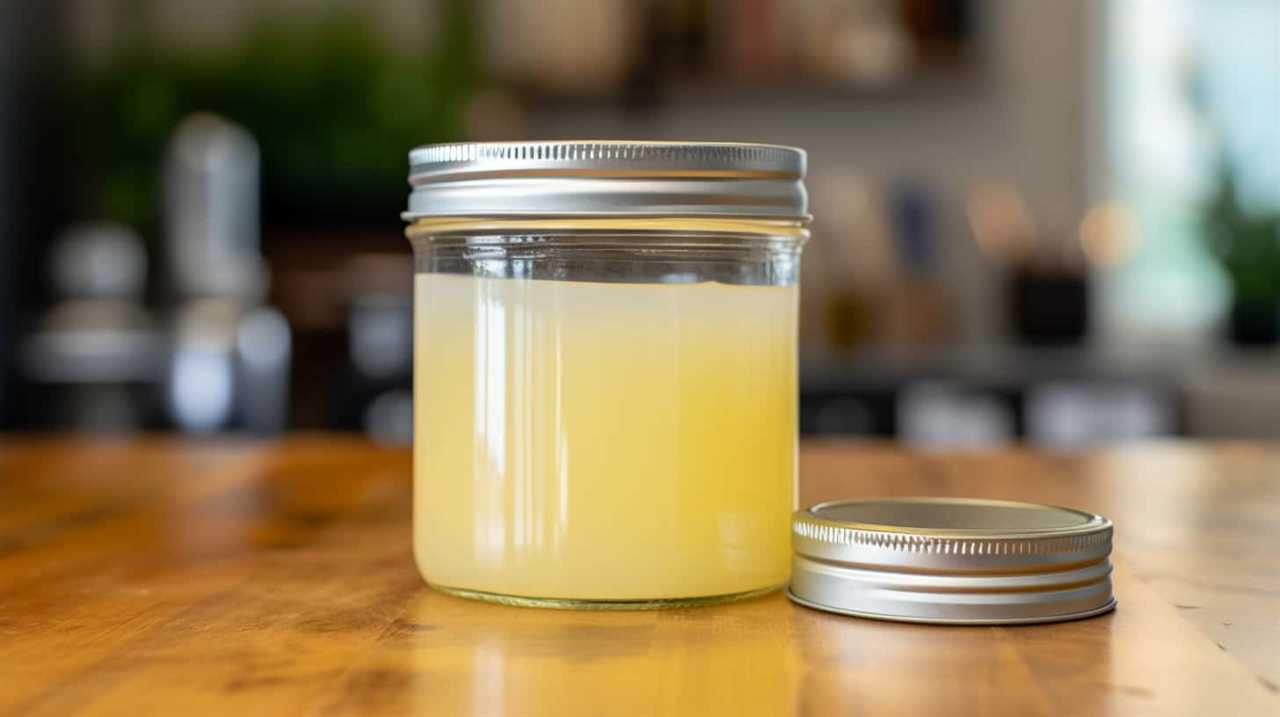
Comparing With Other Waxes
When comparing the melting point of soy wax to other waxes, we can see significant differences in their performance and suitability for various candle types and environments. Here are some key points to consider:
- Soy wax has a lower melting point compared to other waxes, typically ranging from 120-160°F (49-71°C).
- This lower melting point makes soy wax ideal for container candles, as it allows for a slower, more controlled burn.
- Soy wax has a longer burn time compared to other waxes, providing a longer-lasting candle experience.
- The lower melting point of soy wax also makes it easier to handle and work with during the candle-making process.
These differences in wax properties make soy wax a popular choice among candle makers looking for a versatile and high-quality wax option. Its unique melting point and performance characteristics contribute to its appeal in various candle-making applications.
Beeswax and Its Melting Point
In the article, we’ll explore the melting point of beeswax.
Beeswax, a natural wax produced by honeybees, is known for its unique properties and versatility in various applications.

When it comes to melting temperature, beeswax has a relatively low melting point compared to other waxes. The melting point of beeswax typically ranges between 144 to 147 degrees Fahrenheit (62 to 64 degrees Celsius).
This relatively low melting point makes beeswax an ideal choice for candles, as it allows for a slow and even burn. Additionally, the low melting point of beeswax makes it easy to work with in various crafts and skincare products.
Now, let’s move on to the next section where we’ll discuss palm wax and its melting point.
Palm Wax and Its Melting Point
Let’s delve into the melting point of palm wax, a commonly used wax in candle making, and explore its unique properties. Palm wax is derived from the oil palm tree and has gained popularity due to its eco-friendly nature.
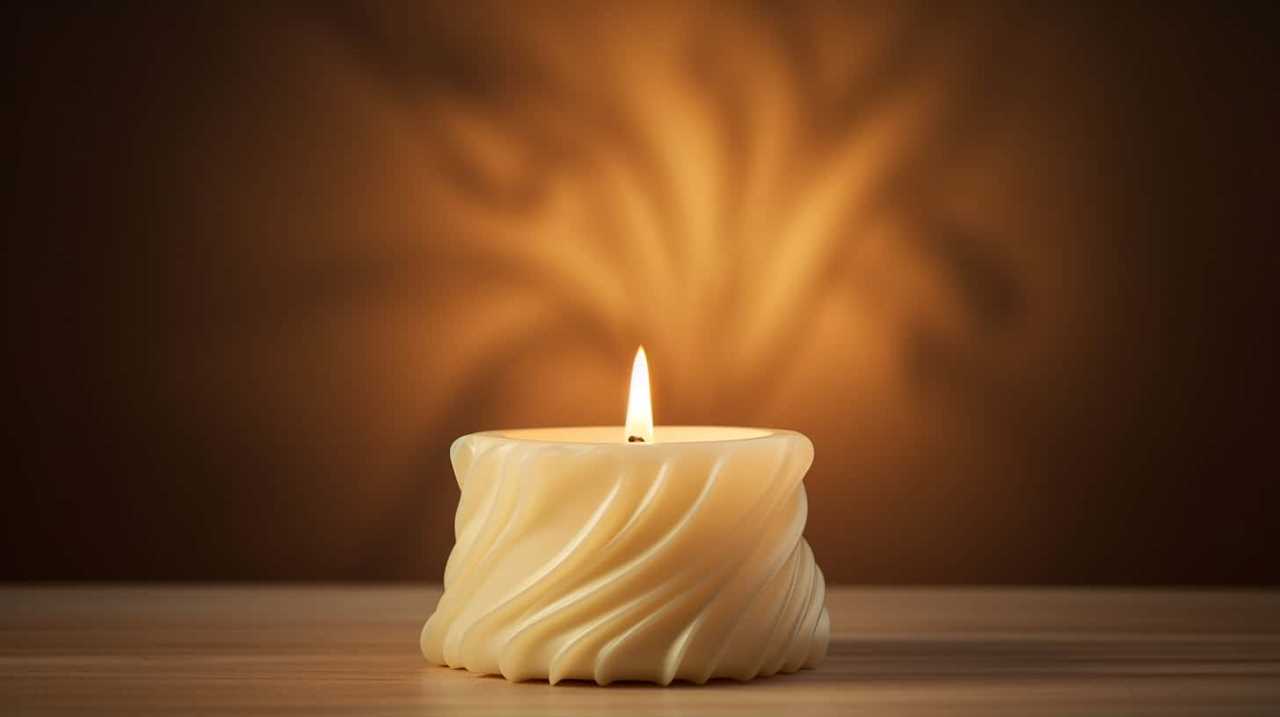
Here are some key properties of palm wax and how it compares to other waxes in terms of melting point:
- Palm wax has a melting point ranging from 50 to 60 degrees Celsius.
- It has a higher melting point compared to soy wax, making it more suitable for warmer climates.
- Palm wax has excellent scent retention, allowing for a longer-lasting fragrance.
- Its smooth and creamy texture gives candles a luxurious appearance.
Understanding these palm wax properties and its melting point comparison lays a foundation for exploring blended waxes and their melting points.
Blended Waxes and Their Melting Points
When it comes to blended waxes and their melting points, there are several factors that come into play.
The composition of the blend, including the types and proportions of different waxes used, can greatly influence the melting point.
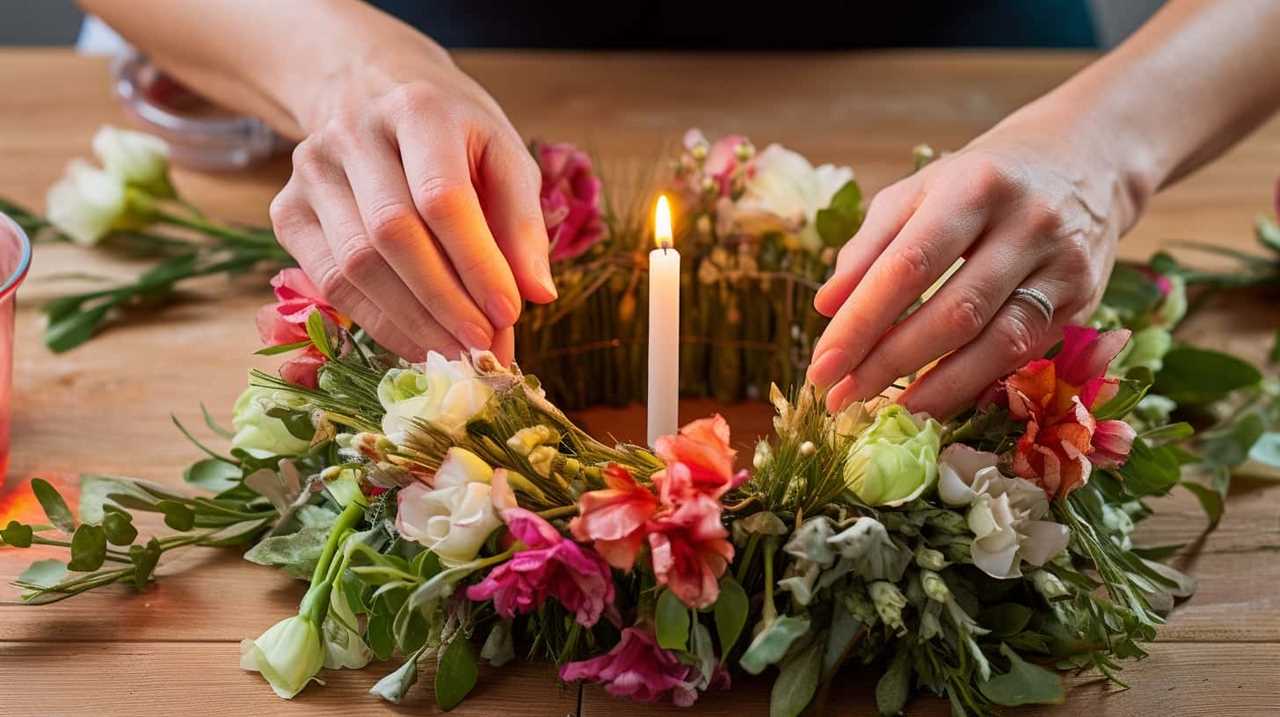
Additionally, additives or modifiers can also impact the melting point of the blend.
Factors Affecting Melting Points
We can explore the factors that influence the melting points of blended waxes by considering their composition and additives. Here are four key factors to consider:
- Molecular structure: The arrangement and size of molecules in the wax can affect its melting point. Waxes with longer hydrocarbon chains tend to have higher melting points, as the intermolecular forces between the molecules are stronger.
- Temperature control: The rate at which the wax is heated and cooled can also impact its melting point. Slow heating and gradual cooling can lead to a higher melting point, while rapid temperature changes can lower it.
- Additives: Certain additives, such as stearic acid or beeswax, can modify the melting point of the wax. These additives can either raise or lower the melting point depending on their chemical properties.
- Blending ratios: The proportions of different waxes in a blend can affect the overall melting point. Mixing waxes with different melting points can result in a blend with an intermediate melting point.
Understanding these factors is essential when comparing different wax blends and determining their suitability for specific applications.
Comparing Different Wax Blends
To compare different wax blends and their melting points, we can analyze the composition and additives of each blend. By understanding the properties of various waxes, we can determine the optimal melting temperature for different applications. The table below provides a comparison of three common wax blends used in candle making:

| Wax Blend | Composition | Melting Point |
|---|---|---|
| Paraffin | Petroleum-based | 130-150°F |
| Soy | Vegetable-based | 120-145°F |
| Beeswax | Natural beeswax | 144-147°F |
Paraffin wax, being petroleum-based, has a higher melting point compared to soy wax, which is derived from vegetable sources. Beeswax, a natural option, has the highest melting point among the three. When choosing a wax blend, it is important to consider the desired burning time, scent throw, and appearance. By comparing wax properties and their optimal melting temperatures, you can select the most suitable blend for your candle-making needs.
Practical Applications and Uses
For a variety of practical applications and uses, blended waxes with different melting points offer a range of options. These blends combine different types of waxes to create a desired melting point, enhancing their versatility and functionality.
Here are some practical uses of blended waxes and their benefits and drawbacks:
- Candle making: Blended waxes allow for customization of candle melting points, enabling the creation of candles that burn longer or have specific fragrance release profiles.
- Cosmetics and personal care products: Blended waxes are used in lip balms, lotions, and creams to provide desired consistency and stability.
- Adhesive and coating industries: Blended waxes with controlled melting points are used in adhesives and coatings to improve performance and durability.
- Food industry: Blended waxes find applications in food coatings, where specific melting points are required for proper adhesion and texture.
The benefits of blended waxes include enhanced flexibility, improved performance, and increased control over melting characteristics. However, drawbacks may include increased complexity in formulation and potential changes in other properties such as color or scent.
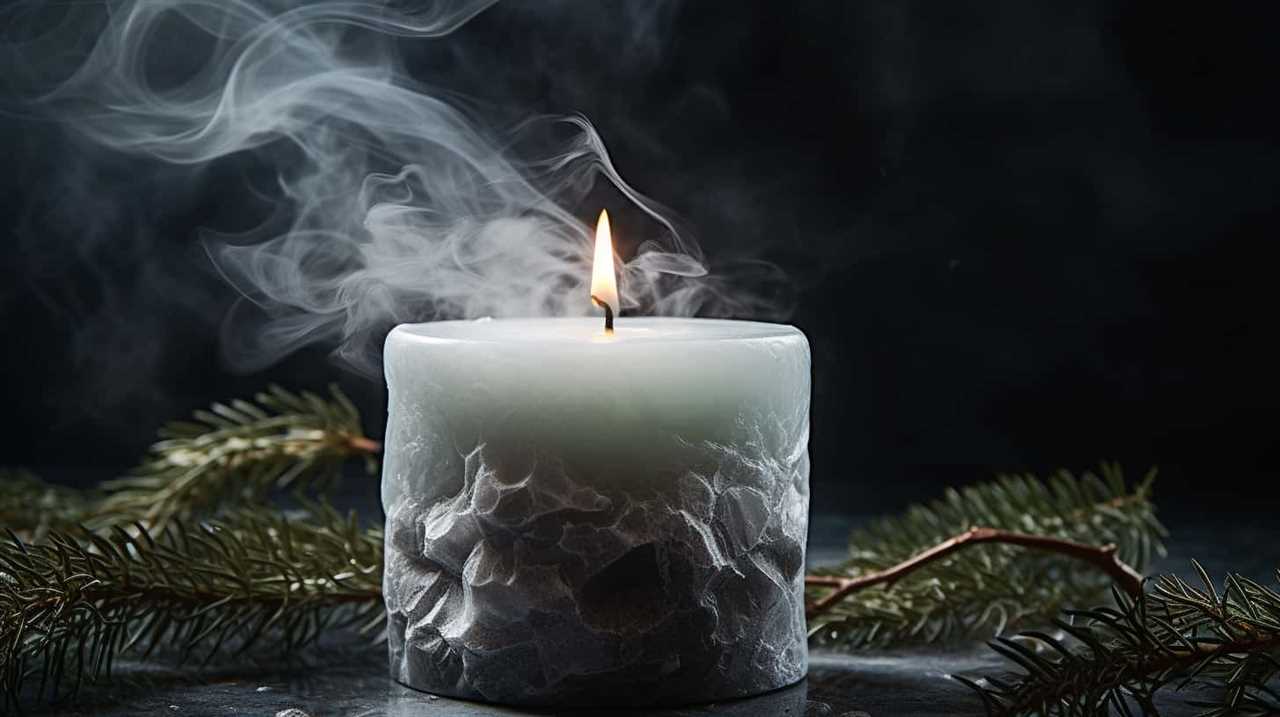
Testing and Determining Melting Point
Determining the melting point of candle wax involves conducting tests to measure the temperature at which it transitions from a solid to a liquid state. To achieve accurate results, various testing techniques can be employed. One common method is the capillary tube method, where a small sample of the wax is placed in a thin glass tube and heated slowly until it melts. The temperature is recorded when the first drop of liquid appears. Another technique is the hot stage microscopy, which involves observing the wax sample under a microscope while gradually increasing the temperature until melting occurs. This allows for precise determination of the melting point. To ensure temperature accuracy, calibrated thermometers and digital temperature probes can be used. These tools provide reliable and precise measurements, crucial for accurate melting point determination.
| Testing Technique | Description |
|---|---|
| Capillary Tube Method | A small sample of wax is heated slowly in a thin glass tube until it melts. The temperature is recorded when the first drop of liquid appears. |
| Hot Stage Microscopy | The wax sample is observed under a microscope while gradually increasing the temperature until melting occurs. This allows for precise determination of the melting point. |
Determining the melting point of candle wax requires careful attention to detail and accurate temperature measurements. By employing suitable testing techniques and ensuring temperature accuracy, one can obtain reliable results for this important property of candle wax.
Practical Applications of Melting Point in Candle Making
As we delve into the practical applications of the melting point in candle making, it becomes evident that understanding this property plays a crucial role in achieving desirable candle characteristics. The melting point of candle wax is a key factor in determining its burn time, scent throw, and overall performance.
Here are four practical applications of melting point in candle making:
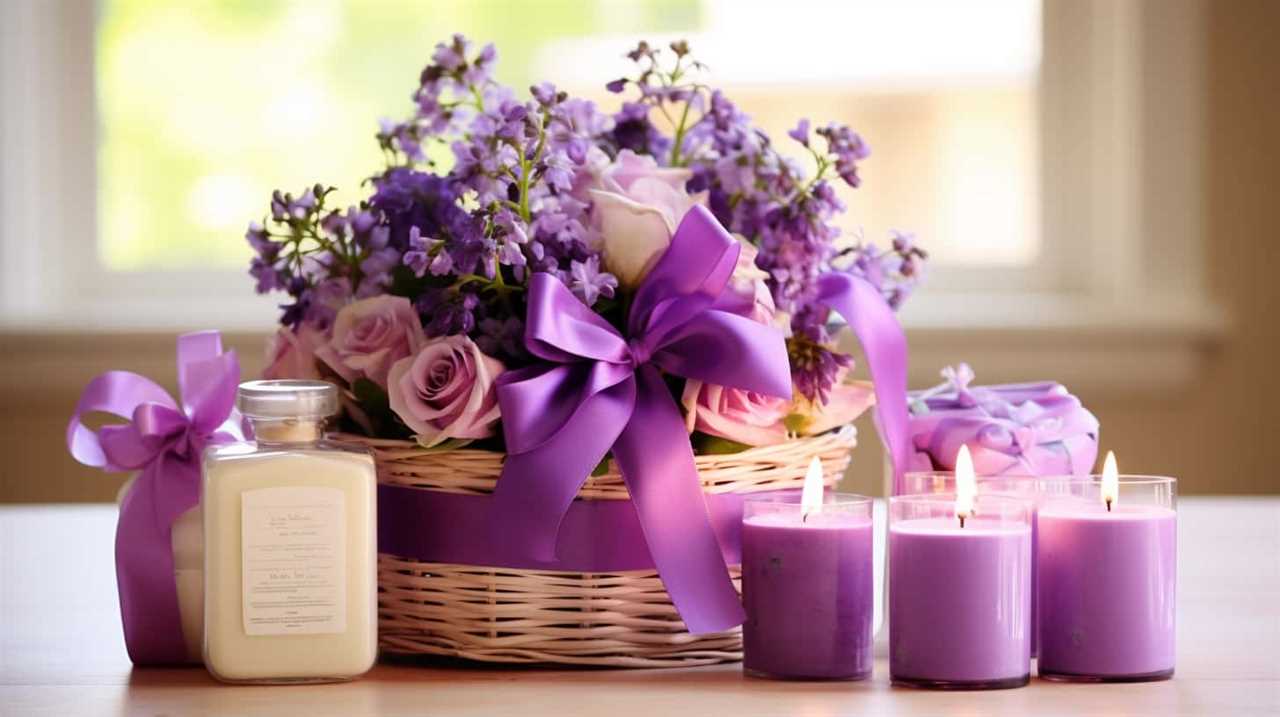
- Control of burn time: By selecting a wax with a specific melting point, candle makers can regulate the rate at which the wax melts and therefore control the burn time of the candle.
- Scent release: Different fragrance oils have different flashpoints, which can affect the scent throw of a candle. By matching the melting point of the wax with the flashpoint of the fragrance oil, candle makers can optimize the release of the scent.
- Stability: Understanding the melting point allows candle makers to choose waxes that provide stability during the manufacturing process and when the candle is in use.
- Aesthetics: The melting point of wax can impact the appearance of a candle, influencing factors such as texture, color, and the formation of a desirable melt pool.
Frequently Asked Questions
How Does the Melting Point of Candle Wax Affect the Overall Burn Time of a Candle?
The melting point of candle wax directly influences the burn time and efficiency of a candle. By retaining heat at higher melting points, the wax burns more slowly and efficiently, resulting in a longer-lasting candle.
Can the Melting Point of Candle Wax Be Adjusted to Create Different Types of Candles, Such as Dripless or Scented Candles?
Yes, the melting point of candle wax can be adjusted to create different types of candles. This allows for the creation of dripless or scented candles, providing a more enjoyable and convenient experience for customers.
Are There Any Safety Concerns Associated With Using Candle Wax With a High Melting Point?
Safety precautions should be taken when working with candle wax with a high melting point. Proper temperature control is crucial to prevent burns or fires. It is important to handle the wax carefully and follow recommended safety guidelines.
How Does the Melting Point of Candle Wax Affect the Fragrance Throw of Scented Candles?
The melting point of candle wax directly affects the fragrance release and scent retention of scented candles. Higher melting points allow for longer burn times and better scent retention, resulting in a stronger and longer-lasting fragrance throw.
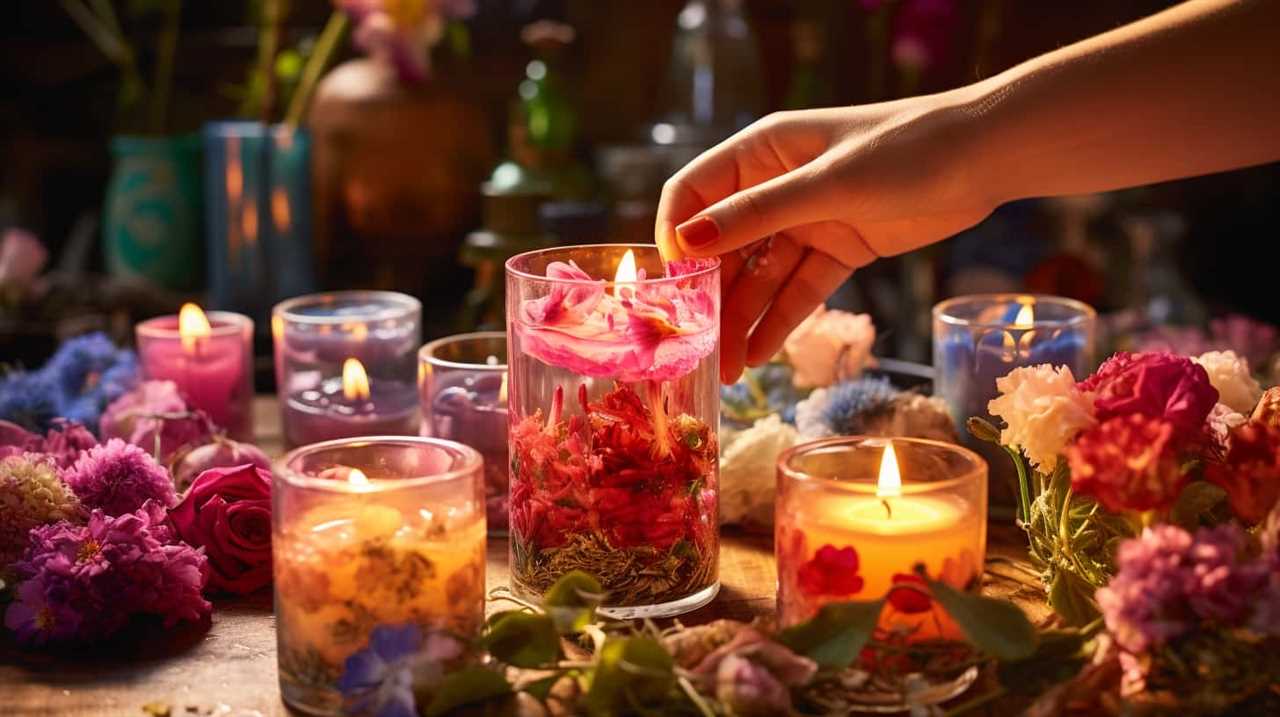
Can the Melting Point of Candle Wax Affect the Appearance or Texture of the Finished Candle?
The melting point of candle wax impacts its appearance and texture. A higher melting point results in a smoother texture and better moldability, while lower melting points can affect color and lead to a rougher finish.
Conclusion
In conclusion, understanding the melting point of candle wax is crucial for candle makers. By knowing the melting point, they can select the right wax for their desired candle characteristics. Factors like the type of wax and blending different waxes can also affect the melting point.
Testing and determining the melting point helps ensure the quality and performance of the candles. Overall, the melting point is a key factor in the art and science of candle making, like a compass guiding makers toward creating beautiful, long-lasting candles.
I’m Jane and I love candles. I have candles everywhere in my house–in every room, on every surface. I love the smell of candles, and I love how they make my place feel warm and cozy.
Candles are really important to me. They help me relax and de-stress after a long day. They remind me of happy memories, and they make me feel calm and peaceful. I can’t imagine my life without candles!
Candles
What Is a Sand Candle

Curious about what a sand candle is? Let us fill you in on all the details!
Sand candles are unique and beautiful creations that can bring joy and warmth to any space. They are handmade candles made by pouring melted wax into a mold filled with sand.
As the wax cools and hardens, it takes on the shape and texture of the sand, resulting in a stunning candle with a rustic and beachy feel.
Sand candles are not only a lovely addition to any home decor, but they also make thoughtful gifts for your loved ones.
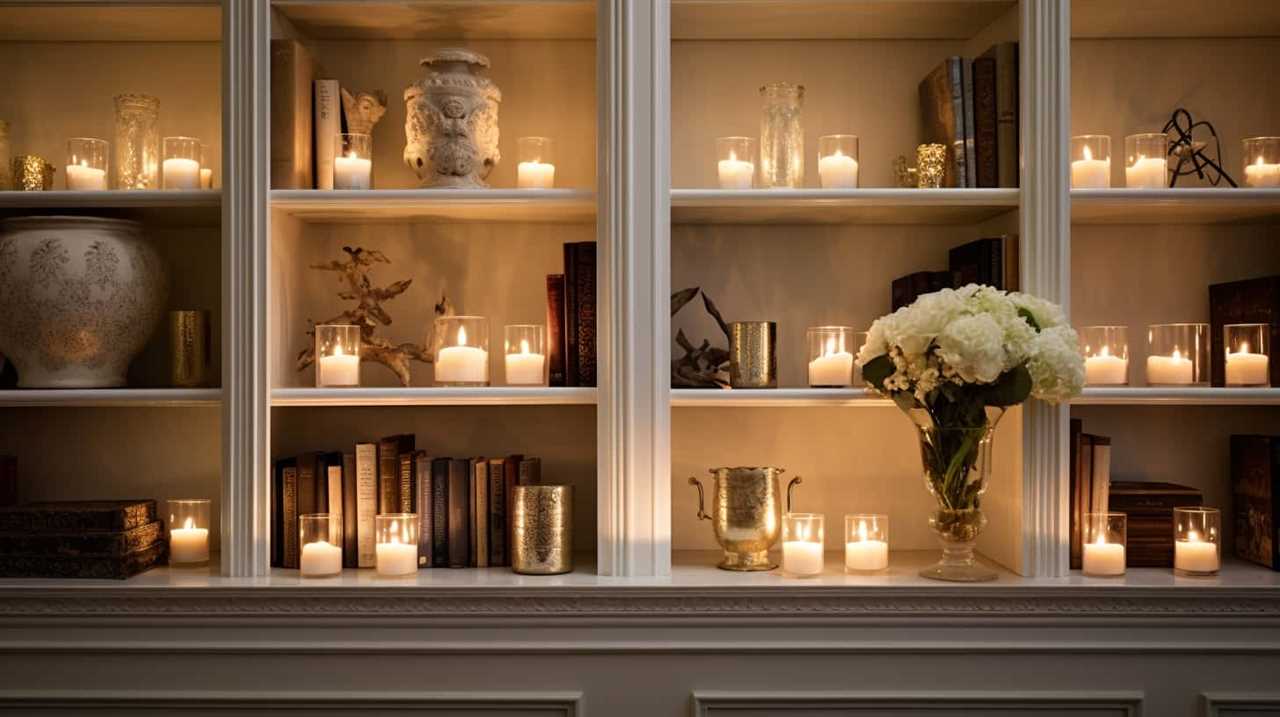
So, if you’re ready to learn more about this delightful craft, let’s dive in and explore the world of sand candles together!
Key Takeaways
- Sand candles have a long history and cultural significance in coastal communities.
- Sand candles provide a sustainable alternative to traditional candle making.
- Candle molds, fragrance, wicks, sand, seashells, and stirring sticks are essential materials for making sand candles.
- Decorating techniques such as coloration, carving, and embellishments enhance the visual appeal of sand candles.
History of Sand Candles
One of the key aspects in understanding the history of sand candles is that they’ve been around for centuries. These candles hold a significant cultural significance in various parts of the world, particularly in coastal communities.
The art of sand candle making has been passed down through generations, with each culture adding its unique touch to the process. The process of making sand candles has evolved over time, adapting to the available resources and techniques.
However, with the increasing environmental impact of traditional candle making, sand candles provide a more sustainable alternative. By using sand as a mold and natural materials for the wick, sand candles reduce the carbon footprint associated with traditional candle making.
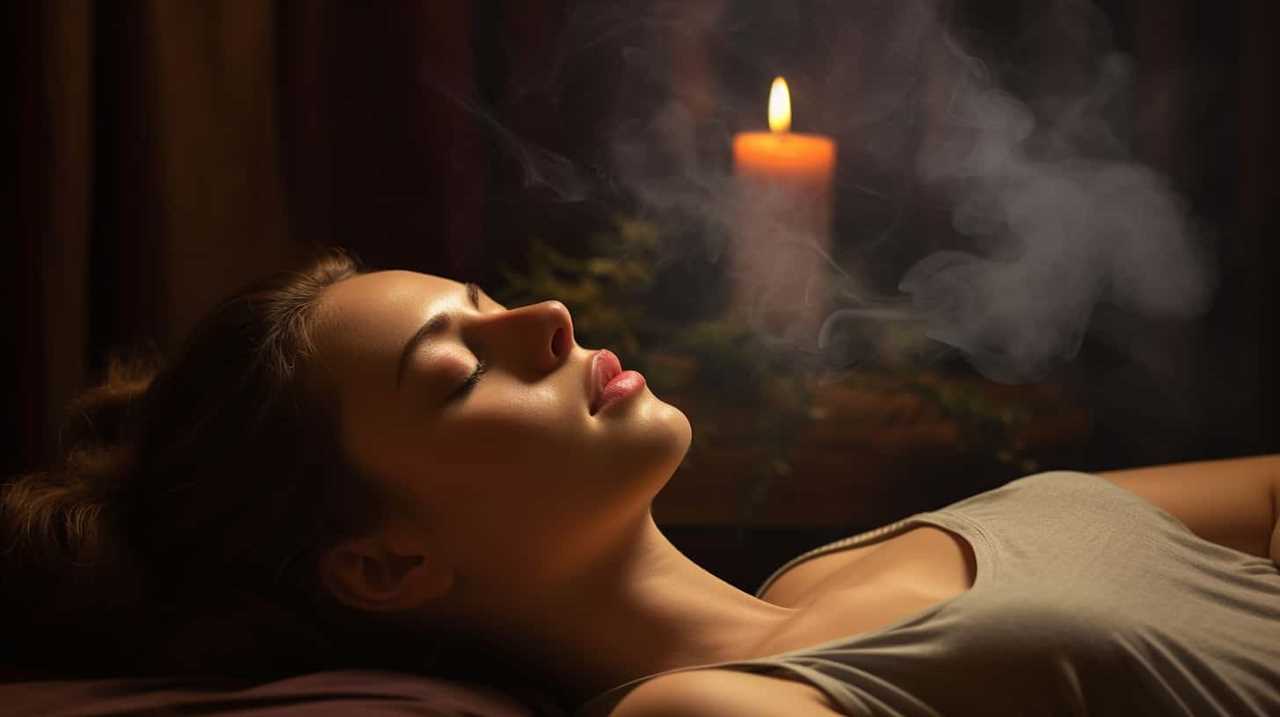
Now that we understand the cultural significance and environmental impact of sand candles, let’s explore the materials needed for sand candle making.
Materials Needed for Sand Candle Making
To make sand candles, we’ll need a few specific materials.
First, we’ll need candle molds, which come in various shapes and sizes. These molds will give our candles their unique shapes and designs.
Next, we’ll need candle fragrance to add a pleasant scent to our candles. There are many different fragrances available, such as lavender, vanilla, or citrus, allowing us to create candles that suit different preferences.
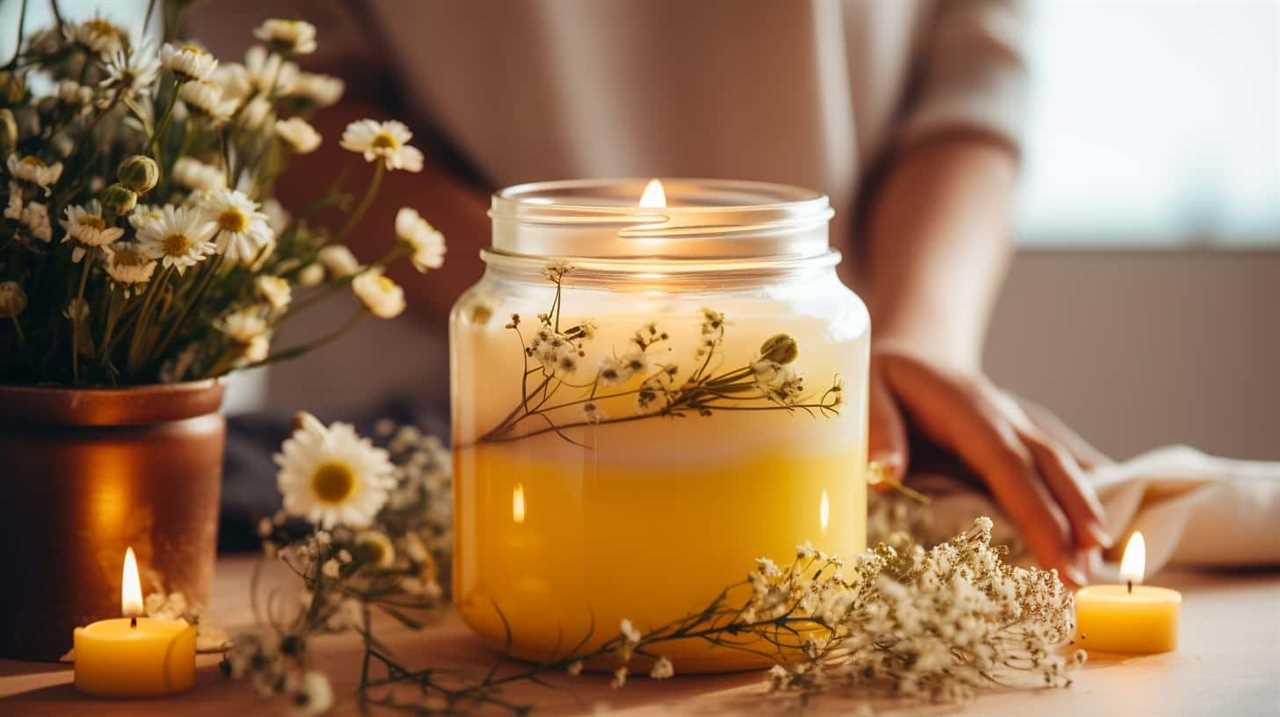
Additionally, we’ll need wicks, which are the strings that burn and provide light. We can choose from different types of wicks, depending on the size and type of candle we want to make.
With these materials in hand, we’re ready to embark on our sand candle making journey.
Step-By-Step Guide to Making a Sand Candle
Now let’s dive into the process of making a sand candle, starting with gathering the necessary materials.
To create a sand candle, you’ll need a few key items. Firstly, choose your wick type based on the size and shape of your candle. Cotton wicks are great for smaller candles, while larger ones may require braided or wooden wicks.

Next, select your sand colors. You can use a single color for a simple and elegant look or mix different shades for a vibrant and dynamic candle. Experiment with various combinations to find what speaks to you.
Once you have your wick and sand colors, you’re ready to move on to the next step – different techniques for decorating sand candles.
Different Techniques for Decorating Sand Candles
Now let’s explore various ways to enhance the beauty of sand candles through different decorating techniques.
One technique is sand candle coloration, where you can add vibrant and contrasting colors to your candles. You can achieve this by mixing colored sand with the regular sand before pouring it into the mold. This creates a stunning visual effect when the candle is lit.

Another technique is sand candle carving, which involves creating intricate designs on the surface of the candle using a carving tool or even a toothpick. This allows you to personalize your candles and add a touch of artistry.
These techniques not only make your sand candles visually appealing but also give them a unique and personal touch.
Now, let’s move on to the next section where we’ll discuss tips for achieving the perfect sand candle.
Tips for Achieving the Perfect Sand Candle
When it comes to achieving the perfect sand candle, there are a few key tips to keep in mind.

One important technique is proper wick placement, ensuring that it’s centered in the candle and extends to the bottom for even burning.
Another tip is to layer decorative sand in different colors or patterns to create a visually appealing design.
These techniques, when executed with precision, can help you create a stunning sand candle that will impress anyone who sees it.
Wick Placement Techniques
To achieve the perfect sand candle, we can enhance the wick placement techniques by using a subordinating conjunction.
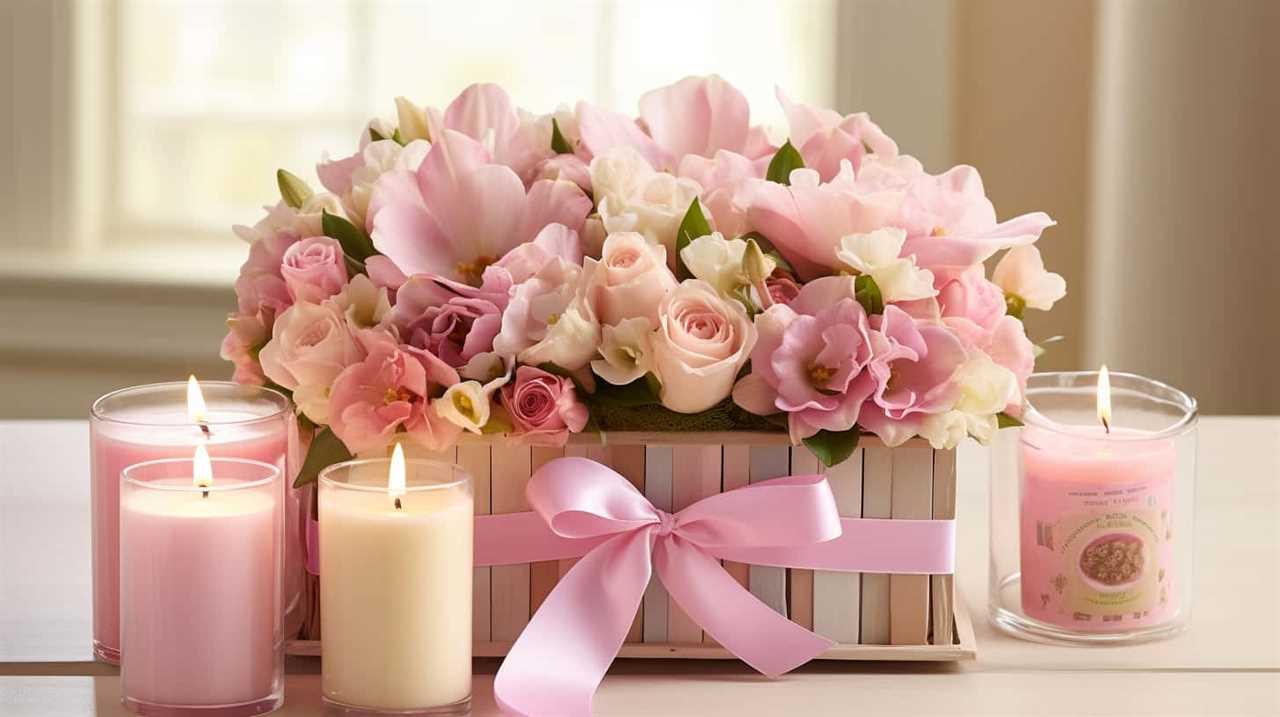
The wick placement is a crucial step in candle making, as it determines how the flame will burn and the overall quality of the candle. When it comes to wick placement, it’s important to consider the size and shape of the container, as well as the type of wax being used.
Candle making tools such as wick holders or centering devices can be helpful in achieving a precise and even placement. Additionally, ensuring that the wick is securely attached to the bottom of the container will prevent it from moving or floating when the wax is poured.
Decorative Sand Layering
To create the perfect sand candle, we enhance the wick placement techniques and move on to discussing the importance of decorative sand layering. When it comes to beach themed centerpieces and unique candle holders, decorative sand layering plays a crucial role in creating a visually stunning and captivating sand candle.
Here are three key tips to achieve the perfect sand candle through decorative sand layering:
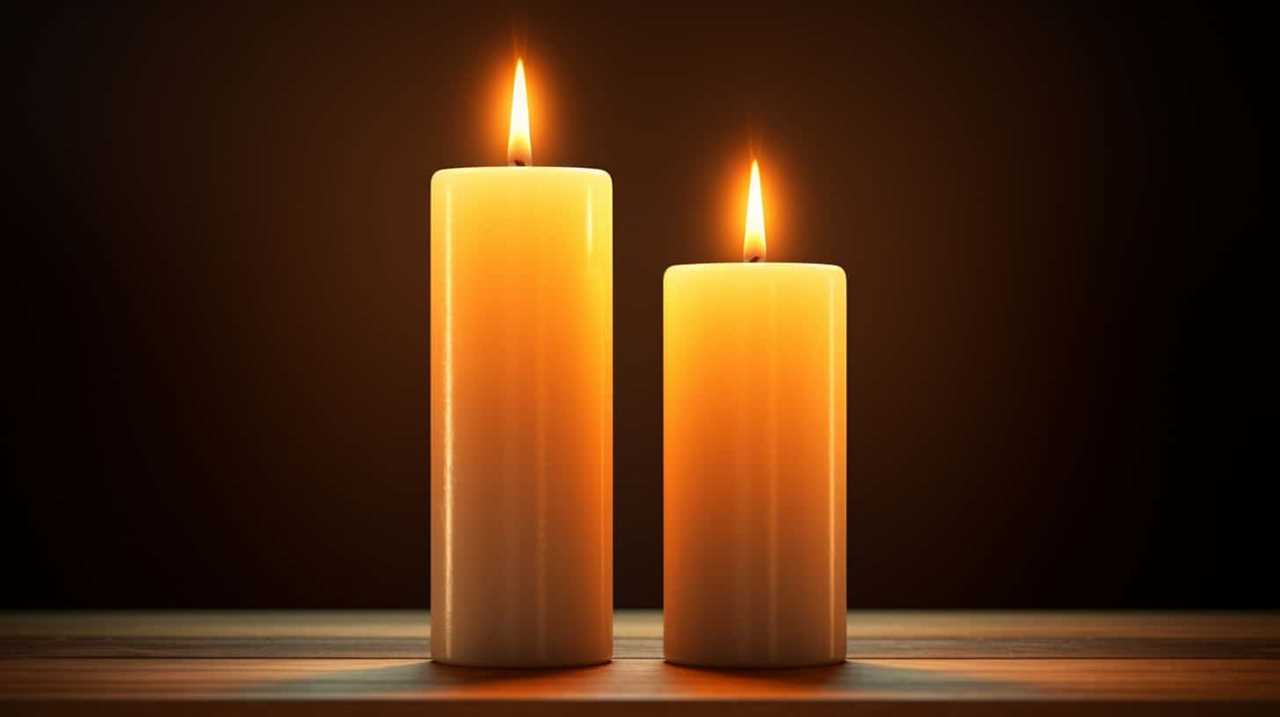
- Play with colors: Experiment with different shades of sand to create beautiful layers that mimic the colors of the ocean and beach.
- Add texture: Incorporate elements like crushed seashells or small pebbles between the layers of sand to add texture and depth to your candle.
- Create patterns: Use a spoon or a small stick to create intricate patterns in the sand layers, such as waves or swirls, to make your sand candle truly unique.
By employing these techniques, you can create beach-themed centerpieces and unique candle holders that will surely impress your guests.
In the next section, we’ll explore fun ways to customize your sand candles, adding a personal touch to your creations.
Fun Ways to Customize Your Sand Candles
As we dive into the topic of customizing sand candles, let’s explore creative ways that will add a personal touch to these unique creations.
When it comes to sand candle centerpieces, the possibilities are endless. You can mix different colors of sand to create beautiful gradients or layer the sand in patterns to create a stunning visual effect.
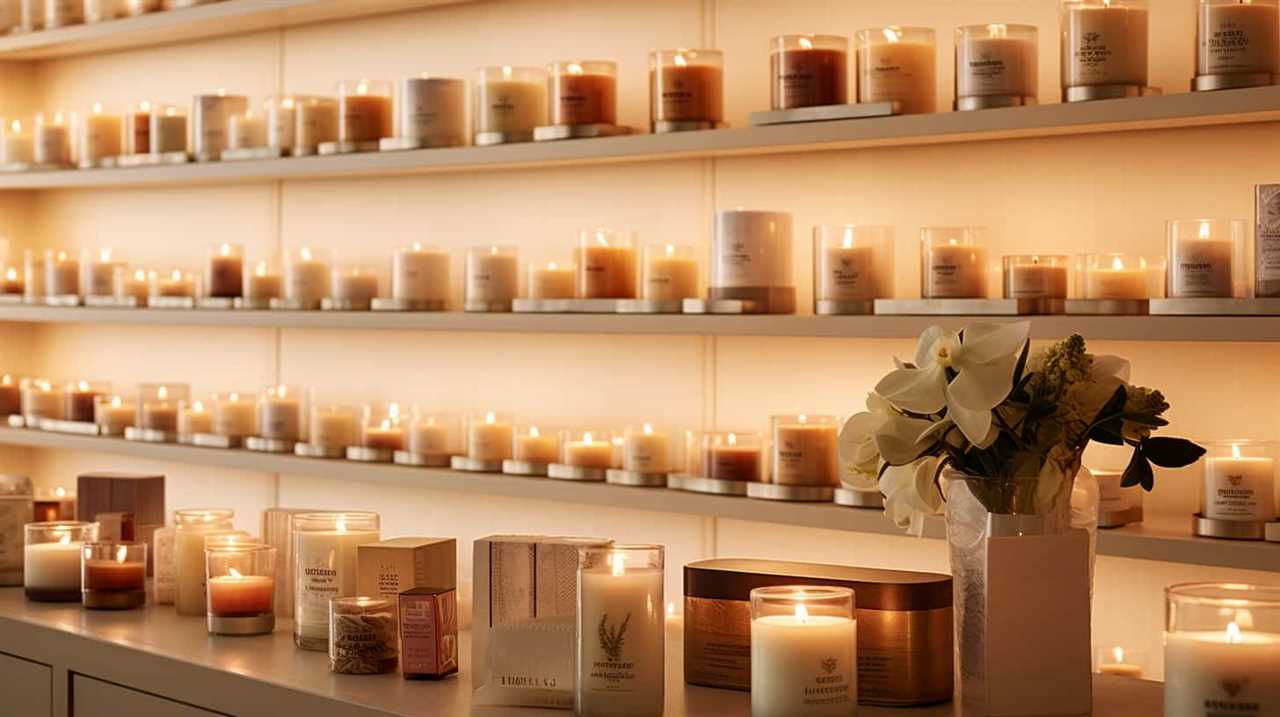
Additionally, consider using unique sand candle molds to add a touch of whimsy or elegance to your candles. From seashells and starfish molds for a beach-themed candle to intricate geometric molds for a modern touch, there are countless options to choose from.
Don’t be afraid to experiment and let your creativity shine through in your customized sand candles.
Frequently Asked Questions
Can Sand Candles Be Used as Functional Candles or Are They Just Decorative?
Sand candles can be used as functional candles, providing a unique and decorative touch to any space. Beginners can learn various techniques to make them, and there are countless creative ways to decorate these beautiful creations.
Are There Any Safety Precautions That Need to Be Taken When Making Sand Candles?
When making sand candles, it’s important to take safety precautions. Make sure to use heat-resistant gloves and goggles. Also, keep a fire extinguisher nearby. The materials required include sand, wax, wicks, and a mold.
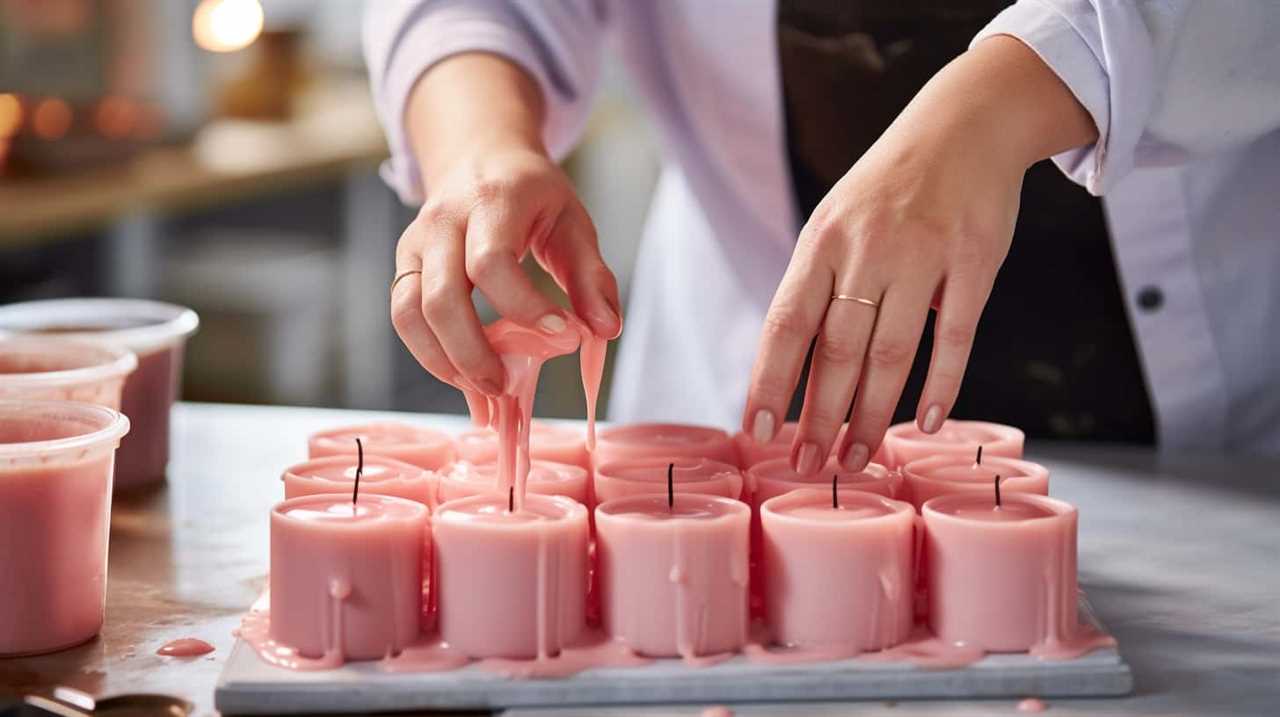
Can Any Type of Sand Be Used to Make Sand Candles or Are There Specific Types That Work Best?
Different types of sand are suitable for making sand candles. While sand from the beach can be used, it is important to remove any impurities or debris. Finer sands tend to work best for creating intricate designs and achieving a smoother finish.
How Long Does It Take for a Sand Candle to Fully Set and Harden?
It usually takes a sand candle a few hours to fully set and harden. To properly care for a sand candle, keep it in a cool, dry place. For added color and fragrance, mix in non-toxic dyes and essential oils.
Can Sand Candles Be Made in Different Shapes and Sizes or Are They Usually Limited to a Specific Form?
Sand candles can be molded into various shapes and sizes, allowing for creative expression. Different techniques, such as using molds or hand sculpting, can be employed to shape these unique candles. Additionally, there are countless ways to decorate them, making each one a work of art.
Conclusion
As the sun sets and the gentle waves crash against the shore, the flickering glow of a sand candle illuminates the beach.
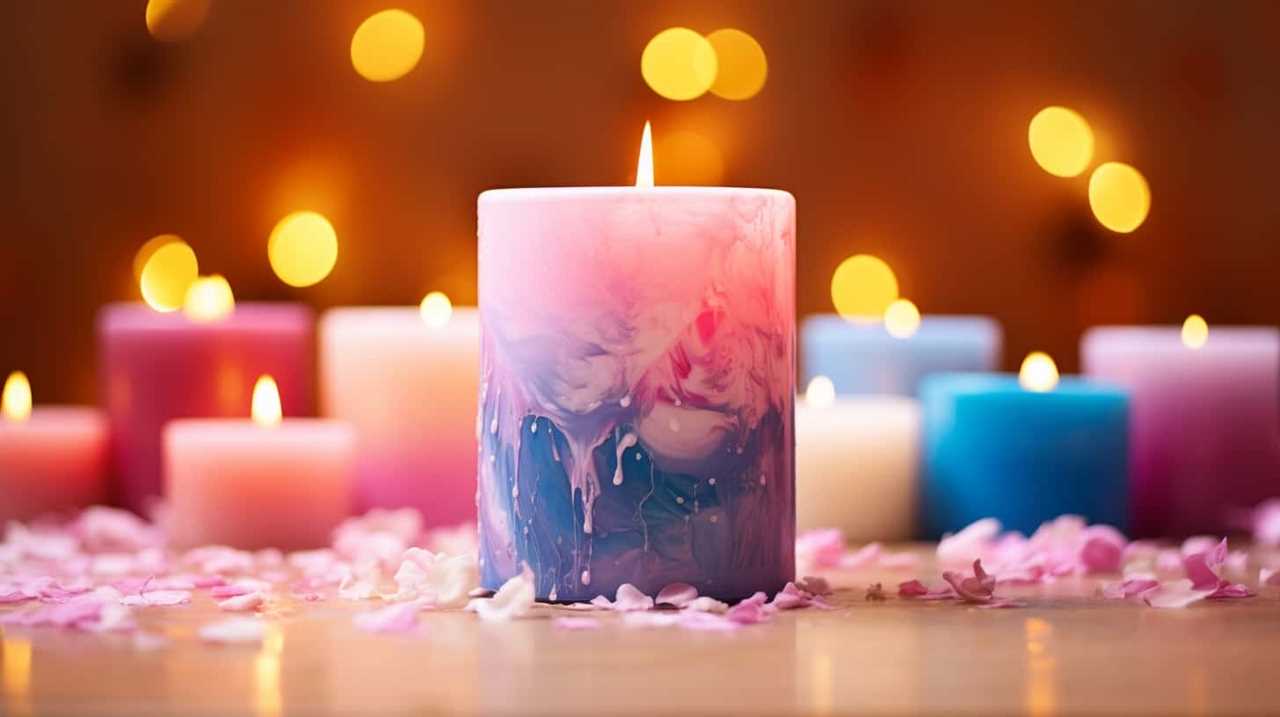
The intricate patterns and vibrant colors dance on the grains of sand, creating a mesmerizing sight.
Crafting a sand candle is an art form that allows you to express your creativity and capture the beauty of the beach.
So, grab some sand, wax, and a sense of adventure, and let your imagination soar as you create your own unique sand candles.
I’m Jane and I love candles. I have candles everywhere in my house–in every room, on every surface. I love the smell of candles, and I love how they make my place feel warm and cozy.
Candles are really important to me. They help me relax and de-stress after a long day. They remind me of happy memories, and they make me feel calm and peaceful. I can’t imagine my life without candles!
Candles
What Is a Plumbers Candle
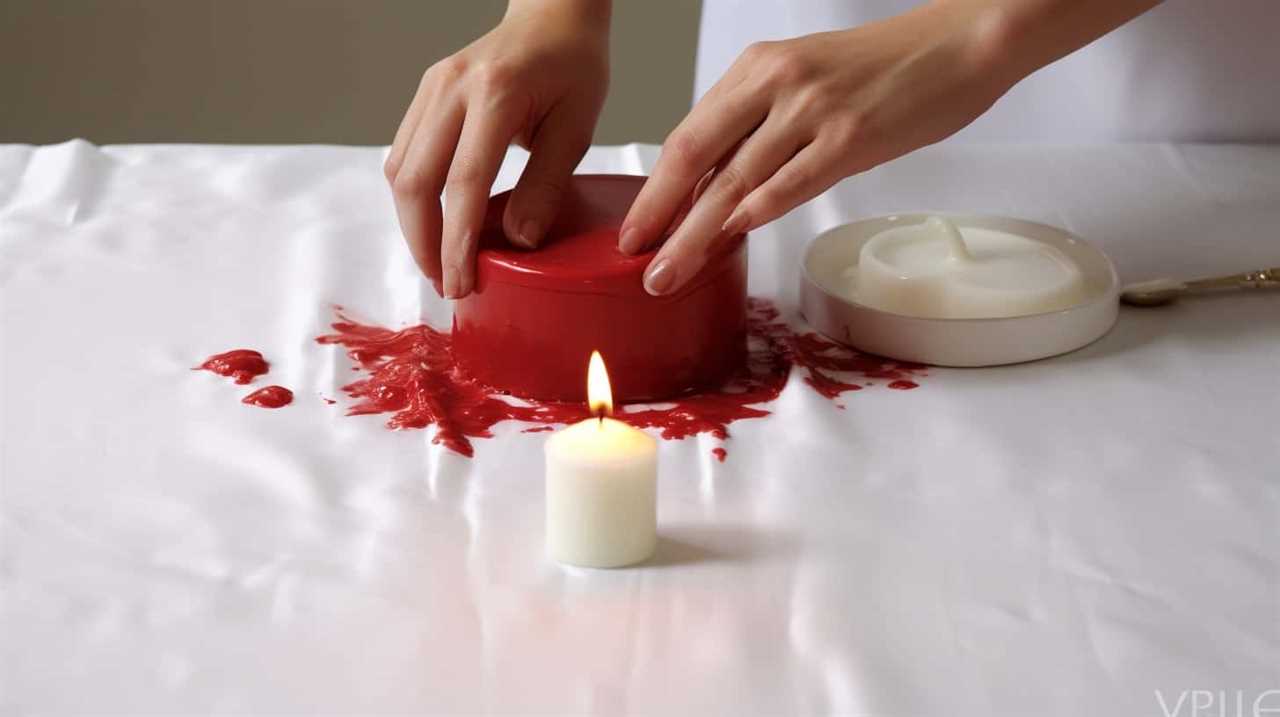
Curious about what a plumber’s candle is? Allow me to shed some light – it’s a total game-changer! Join in on the fun and find out more!
A plumber’s candle is a handy tool that helps us serve you better, especially when it comes to fixing those stubborn plumbing issues.
It’s a small but powerful device that works wonders in detecting leaks and identifying problem areas in your pipes.
With a plumber’s candle, we can pinpoint the exact location of the issue and fix it with precision.
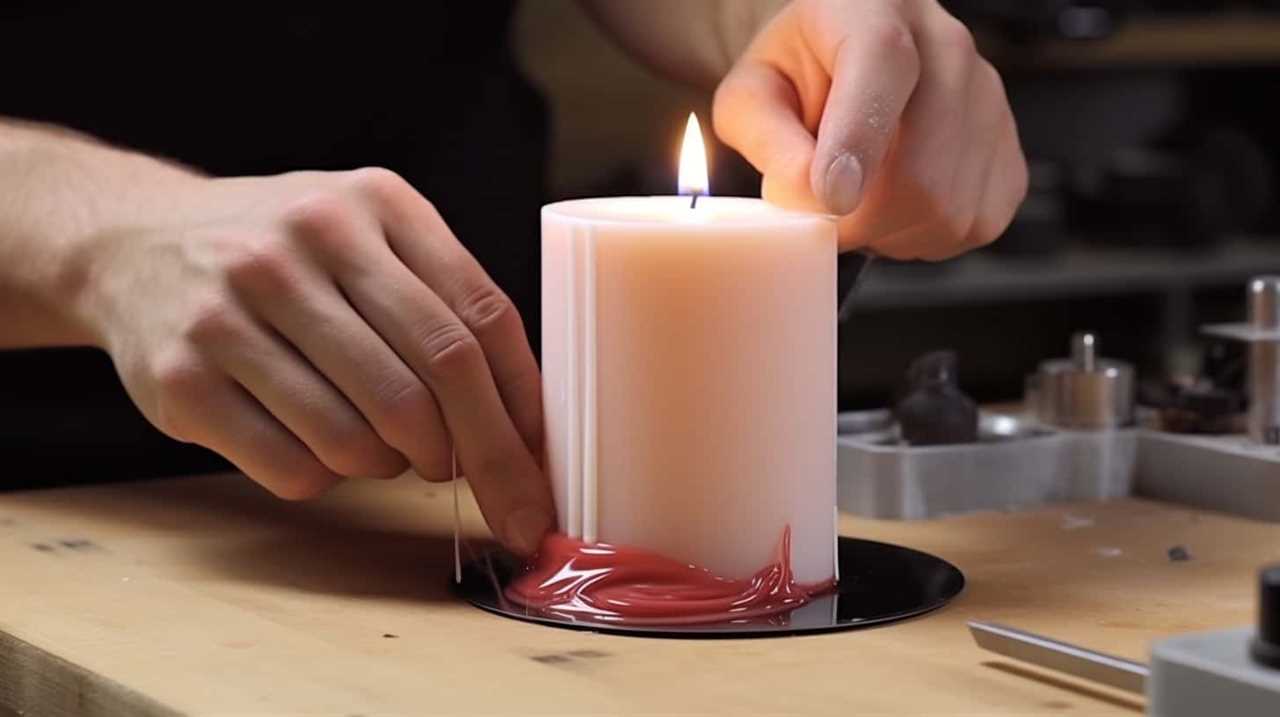
Not only does it save us time, but it also saves you from unnecessary hassle and costly repairs.
So, if you’re looking for top-notch plumbing service, trust us, we’ll always have a plumber’s candle in our toolkit!
Key Takeaways
- A plumber’s candle is a tool used in the plumbing industry to detect and locate leaks in pipes.
- It emits smoke and heat to help identify hidden leaks and cracks, providing non-invasive and efficient leak detection.
- There are different types of plumber’s candles, including traditional wax candles, smoke candles, and LED candles.
- It is important to use a plumber’s candle safely, ensuring a well-ventilated work area, keeping flammable materials away, and never leaving the candle unattended while lit.
Purpose of a Plumber’s Candle
The purpose of a plumber’s candle is to help us locate leaks in pipes. This specialized tool is designed to detect even the most hidden leaks, ensuring the efficient functioning of plumbing systems.
By carefully observing the flame of the candle, plumbers can identify areas where air is escaping or water is seeping out. The plumber’s candle benefits us by providing a non-invasive method of leak detection, minimizing the need for extensive pipe disassembly. This saves time, reduces costs, and prevents unnecessary damage to the plumbing system.

Additionally, this tool allows plumbers to quickly identify the exact location of the leak, enabling them to provide targeted repairs. The precise nature of the plumber’s candle ensures that leaks are efficiently resolved, ensuring the satisfaction of customers who rely on functional plumbing systems.
How a Plumber’s Candle Works
When it comes to understanding how a plumber’s candle works, there are two main points to consider.
Firstly, a plumber’s candle is used for pipe detection, as it can create smoke that helps identify hidden pipes.
Secondly, the heat generated by the candle can be used to locate leaks, as it causes a change in temperature that can be detected using thermal imaging or a heat-sensitive device.
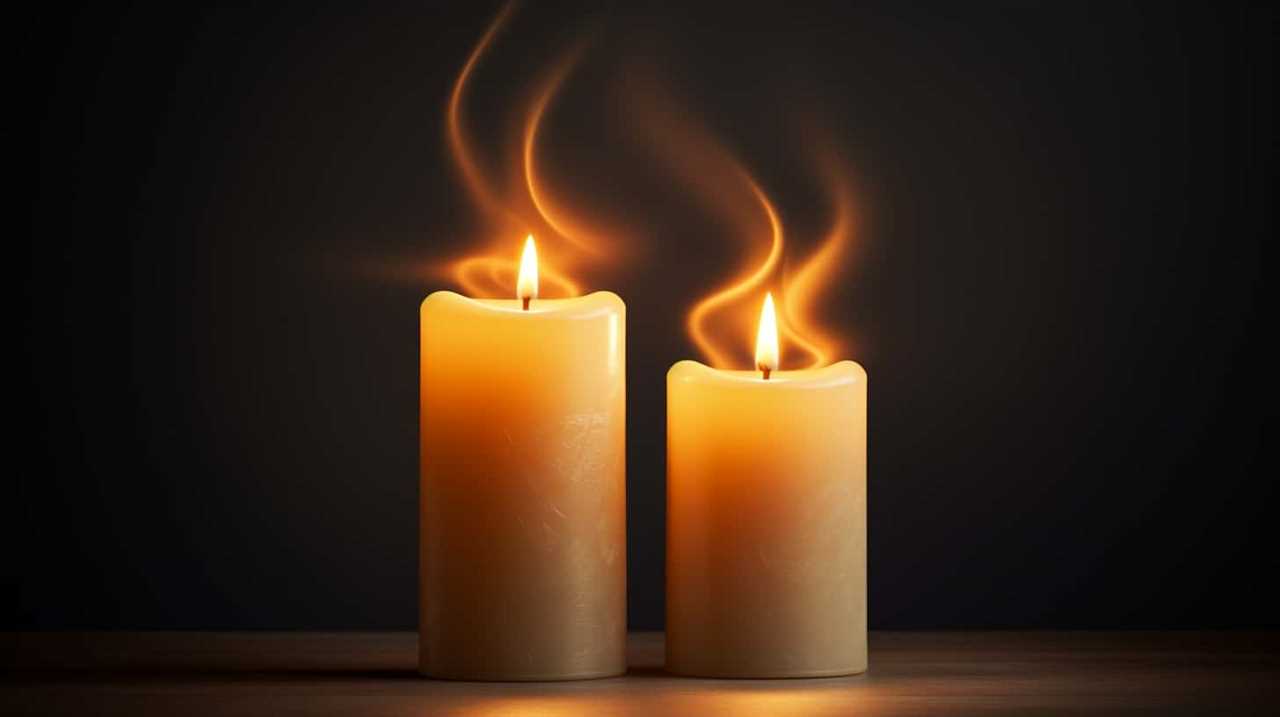
These two functions make the plumber’s candle a valuable tool for plumbing professionals.
Candle for Pipe Detection
We use a plumber’s candle for pipe detection, and it works by emitting smoke that helps us locate hidden leaks or cracks in the pipes. This method is highly effective and allows us to quickly identify problem areas without causing unnecessary damage.
Here are three reasons why a plumber’s candle is a valuable tool for pipe detection:
- Enhanced safety: Unlike alternative pipe detection methods that require physical contact or invasive procedures, using a plumber’s candle is a non-intrusive and safe approach. It eliminates the risk of accidental damage to the pipes or surrounding structures.
- Cost-effective: By pinpointing the exact location of leaks or cracks, a plumber’s candle allows us to address the issue directly, minimizing the need for extensive repairs or replacements. This saves our customers both time and money.
- Efficient and accurate: The smoke emitted by the candle enables us to visually trace the path of the pipe and identify any abnormalities. This method provides precise results, allowing us to efficiently fix the problem and restore the integrity of the plumbing system.
Using a plumber’s candle for pipe detection ensures a thorough and reliable assessment of the pipes, ultimately serving our customers’ best interests.

Heat to Locate Leaks
To continue our discussion on the effectiveness of a plumber’s candle for pipe detection, let’s explore how the heat emitted by the candle is utilized to locate leaks and cracks in the pipes.
When a plumber suspects a leak, they carefully light the plumber’s candle and bring it close to the suspected area. As the candle burns, it emits a controlled amount of heat. This heat causes a change in temperature around the pipes, allowing the plumber to detect any variations that may indicate a leak.
Benefits of Using a Plumber’s Candle
Using a plumber’s candle offers several benefits for plumbing professionals.
Firstly, it enhances pipe sealing by providing a reliable source of heat that ensures the proper adhesion of pipe joint compounds and other sealing materials.
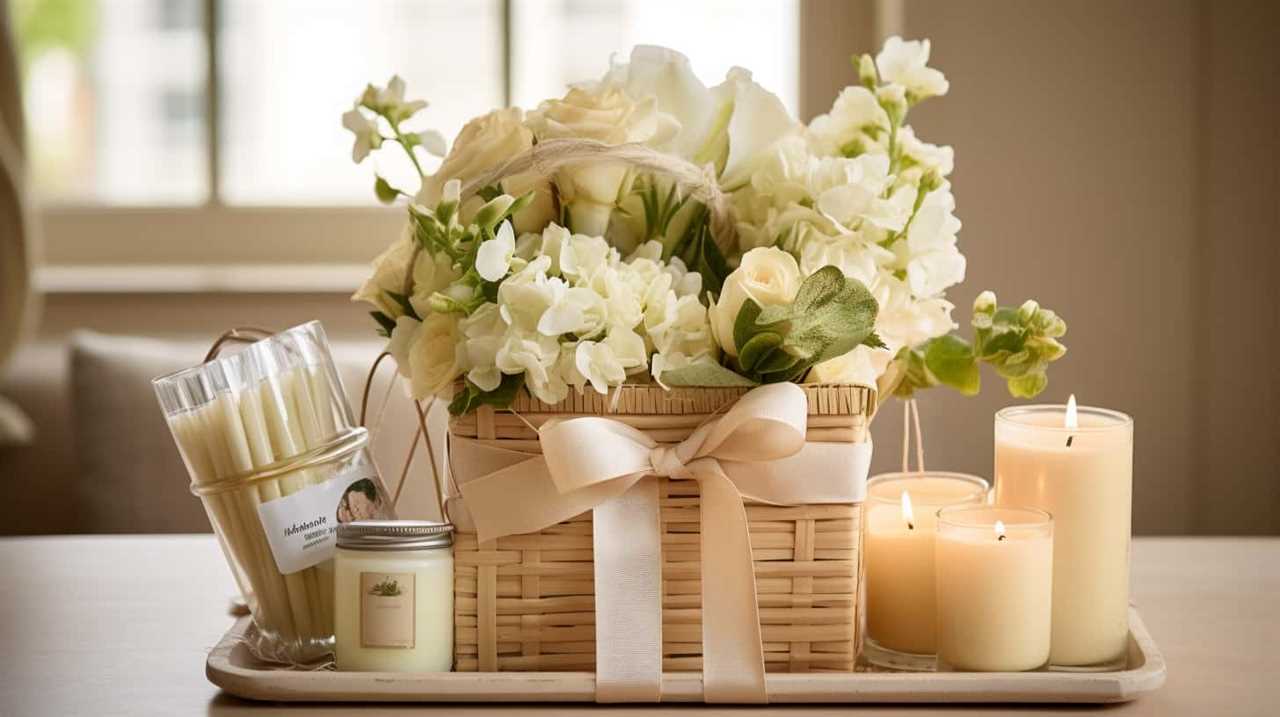
Additionally, the candle’s flame can be used to quickly detect leaks by observing any changes in the flame’s direction or intensity near pipe connections.
These benefits make a plumber’s candle an essential tool for efficient and effective plumbing repairs and installations.
Enhanced Pipe Sealing
A plumber’s candle enhances pipe sealing by effectively sealing leaks and preventing further damage. Here are three reasons why using a plumber’s candle is beneficial for enhanced pipe sealing:
- Improved Heat Detection: A plumber’s candle emits a steady flame that can be used to identify areas of heat accumulation along the pipes. This allows plumbers to detect potential leaks or weak spots that may not be visible to the naked eye. By pinpointing these areas, prompt action can be taken to prevent further damage.
- Cost-effective Alternative: Compared to other methods of pipe sealing, such as using sealing compounds or tapes, a plumber’s candle is a cost-effective solution. It eliminates the need for expensive materials and tools, making it an affordable option for both homeowners and professional plumbers.
- Efficient and Time-saving: With its ability to quickly and effectively seal leaks, a plumber’s candle saves valuable time. This is especially beneficial in emergency situations where immediate action is required to prevent further water damage. Its simplicity and ease of use make it a convenient choice for anyone seeking efficient pipe sealing solutions.
Quick Leak Detection
We rely on a plumber’s candle for quick leak detection and the many benefits it offers.

When it comes to detecting leaks, time is of the essence. The longer a leak goes undetected, the more damage it can cause to your plumbing system and property.
Using a plumber’s candle allows us to quickly identify the location of leaks, enabling us to make timely repairs. This method is highly effective and efficient in identifying even the smallest leaks that may not be visible to the naked eye.
By detecting leaks early on, we can prevent further damage and costly repairs. Quick leak detection is crucial for maintaining the integrity of your plumbing system and ensuring its optimal functionality.
Transitioning into the next section, let’s now explore the different types of plumber’s candles available in the market.
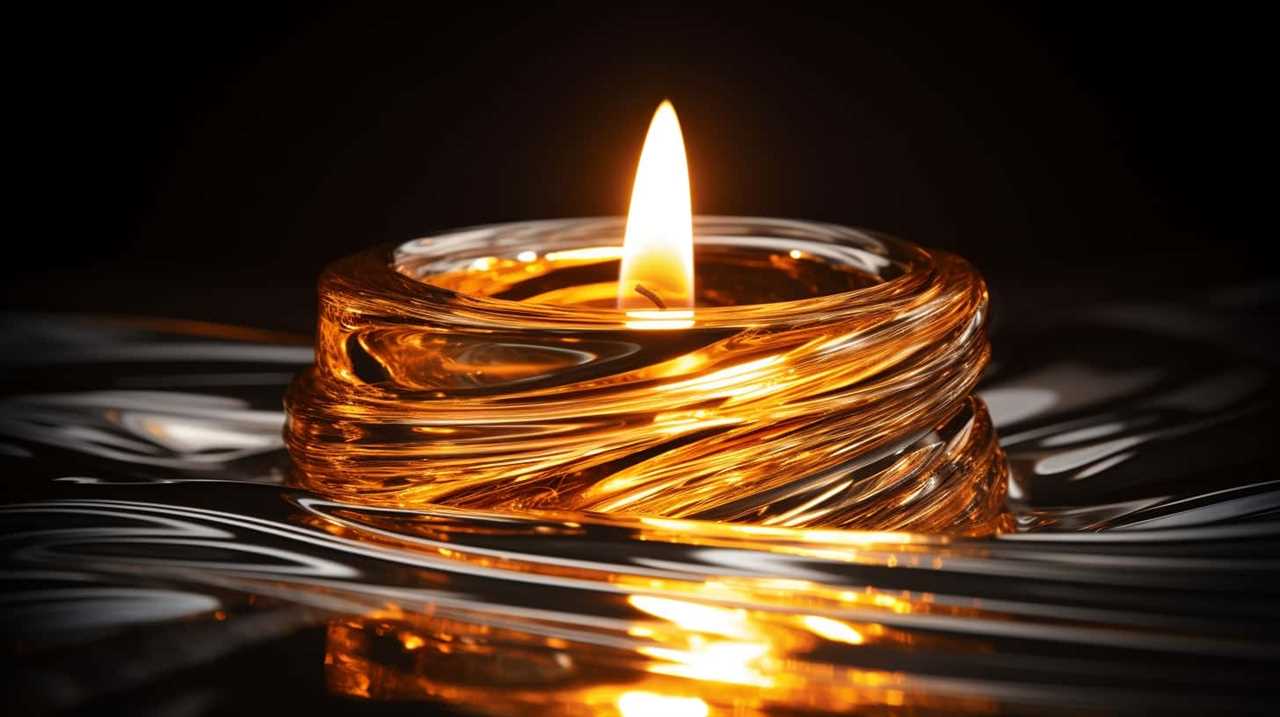
Different Types of Plumber’s Candles
There are several types of candles commonly used by plumbers. These candles have different applications and advantages, making them essential tools in the plumbing industry. Here are three types of plumber’s candles that have evolved over time:
- Traditional Wax Candles: These candles are the most common and widely used by plumbers. They provide a reliable and long-lasting flame, making them ideal for detecting leaks in pipes and fittings.
- Smoke Candles: Smoke candles release a dense, non-toxic smoke when lit. This smoke helps plumbers identify air leaks and faulty ventilation systems, ensuring optimal air quality in residential and commercial spaces.
- LED Candles: LED candles are a modern alternative to traditional wax candles. They emit a bright, flickering light that mimics a real flame. These candles are often used in areas where open flames are prohibited, providing a safe and convenient solution for leak detection.
Understanding the different types of plumber’s candles allows plumbers to choose the most suitable option for each specific situation. Now let’s explore when to use a plumber’s candle in the next section.
When to Use a Plumber’s Candle
When it comes to using a plumber’s candle, we find it essential to consider the specific circumstances and requirements of each plumbing job. A plumber’s candle is typically used in plumbing emergencies, such as when a pipe is frozen or needs to be thawed. The candle’s flame provides a controlled source of heat that can help melt the ice and restore water flow.
Additionally, a plumber’s candle can be used to heat pipes and fittings to make them more pliable for repairs or installations. It’s important to note that a plumber’s candle should only be used by trained professionals due to the potential fire hazard.
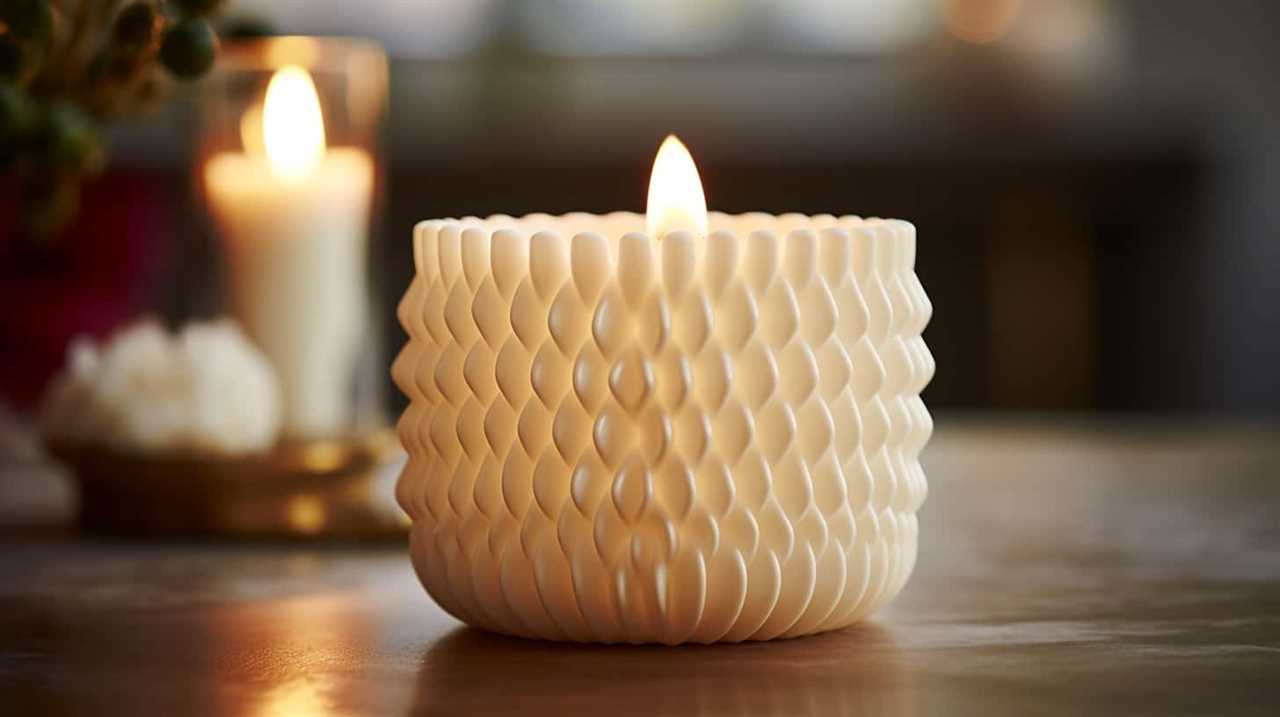
In the next section, we’ll discuss the steps to use a plumber’s candle safely and effectively.
Steps to Use a Plumber’s Candle
To use a plumber’s candle effectively, start by determining the specific plumbing issue and selecting the appropriate size and type of candle. Here are three important steps to follow:
- Prepare the area: Before using the plumber’s candle, make sure to clear any debris or obstructions around the affected plumbing area. This will allow for better access and visibility.
- Light the candle: Once the area is ready, carefully light the plumber’s candle using a lighter or matches. Ensure that the candle is securely placed in a holder or stand to prevent any accidents.
- Apply heat: Gently move the flame of the candle back and forth over the problem area, such as a frozen pipe or a clogged drain. The heat from the candle will help to melt ice or loosen debris, allowing for improved water flow.
Remember to exercise caution when using a plumber’s candle and avoid common mistakes such as leaving the candle unattended or using it near flammable materials. If you prefer alternatives to plumber’s candles, consider using a heat gun or hairdryer, but always prioritize safety and consult a professional if needed.
Safety Precautions When Using a Plumber’s Candle
For our safety when using a plumber’s candle, it’s important to be mindful of the following precautions.
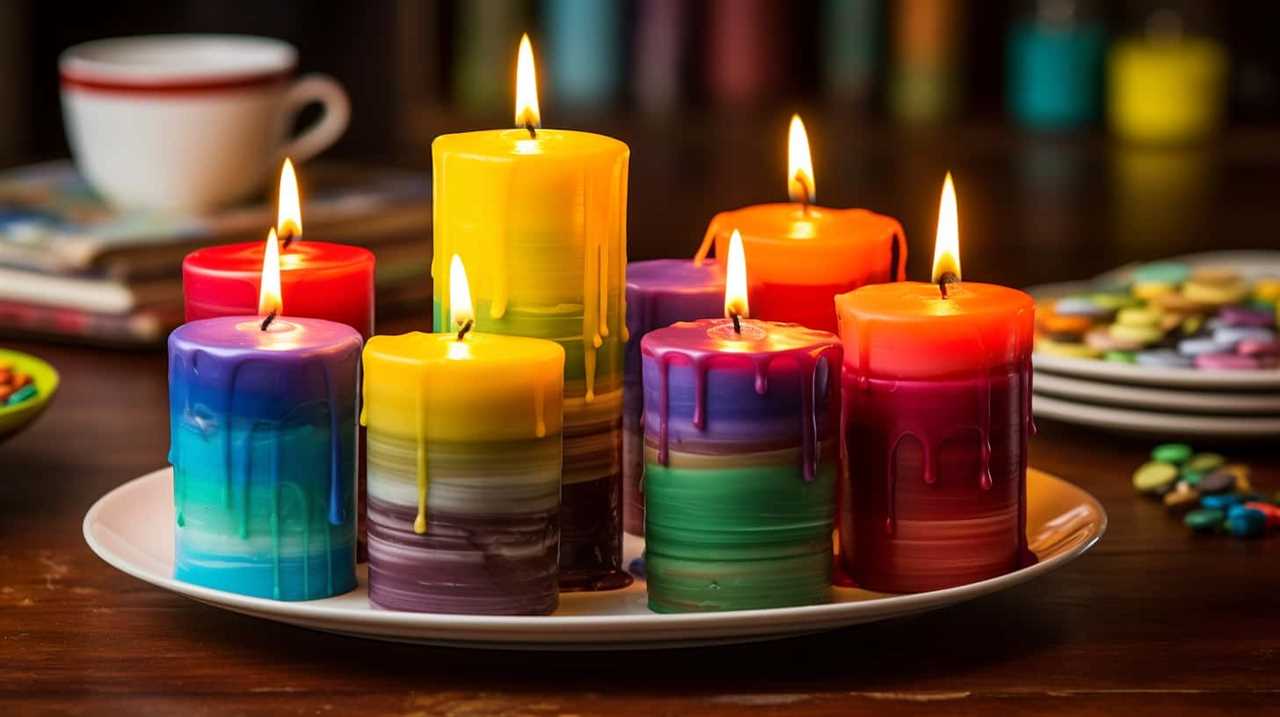
- Always ensure that the work area is well-ventilated to prevent the accumulation of potentially dangerous fumes.
- Keep flammable materials away from the candle, as any sparks or flames can easily ignite them.
- When handling the candle, wear protective gloves to avoid burns and use a stable, non-flammable surface to place it on.
- Never leave the candle unattended while it’s lit, and extinguish it immediately after use.
- Consider plumber’s candle alternatives, such as using a flashlight or headlamp, to minimize the risk of fire hazards.
Importance of a Plumber’s Candle in the Plumbing Industry
In the plumbing industry, a plumber’s candle plays a crucial role in ensuring efficient and accurate work. Here are three reasons why a plumber’s candle is important:
- Safety: Plumber’s candles provide a reliable and controlled source of heat, which is essential for soldering pipes and fittings. Unlike open flames, they eliminate the risk of accidental fires, ensuring the safety of both the plumber and the surrounding environment.
- Precision: Plumber’s candles produce a consistent and focused flame, allowing plumbers to heat specific areas of the pipe evenly. This precision is essential for achieving proper soldering and creating leak-free connections, ultimately resulting in high-quality plumbing installations.
- History: Plumber’s candles have been used for centuries and have stood the test of time. While there are alternatives available today, such as propane torches, plumber’s candles continue to be a popular choice due to their reliability, affordability, and ease of use. Their long-standing presence in the industry speaks to their effectiveness and importance in the plumbing trade.
Frequently Asked Questions
Can a Plumber’s Candle Be Used for Other Purposes Besides Plumbing?
A plumber’s candle, while designed for plumbing purposes, can also be used as an alternative for other tasks. It can serve as a heat source, provide temporary lighting, or even be used for emergency situations. Its versatility makes it a valuable tool in various situations.
Are Plumber’s Candles Safe to Use in All Types of Plumbing Systems?
Plumber’s candles can pose potential hazards in certain plumbing systems. To ensure safe usage, it is crucial to follow proper guidelines and only use them for their intended purpose, such as clearing clogs or heating pipes for repairs.
How Long Does a Plumber’s Candle Typically Last?
Plumber’s candles typically last for an average lifespan determined by various factors such as the wax quality, usage frequency, and size of the candle. Our experience shows that a plumber’s candle can burn for several hours, providing efficient and reliable service.

Can a Plumber’s Candle Be Used to Fix All Types of Plumbing Issues?
A plumber’s candle is a versatile tool that can be used for various plumbing issues. Its benefits include being an alternative to traditional tools and providing a reliable and cost-effective solution.
Are There Any Alternatives to Using a Plumber’s Candle for Plumbing Repairs?
There are alternatives to using a plumber’s candle for plumbing repairs. Some options include using a propane torch or a heat gun. Each alternative has its pros and cons, so it’s important to consider the specific needs of the job.
Conclusion
In conclusion, a Plumber’s Candle is an essential tool in the plumbing industry. Its purpose is to provide a reliable and efficient source of heat for soldering pipes and fittings.
By using a Plumber’s Candle, plumbers can ensure a secure and long-lasting connection between plumbing components. With various types available, plumbers can choose the most suitable candle for their specific needs.
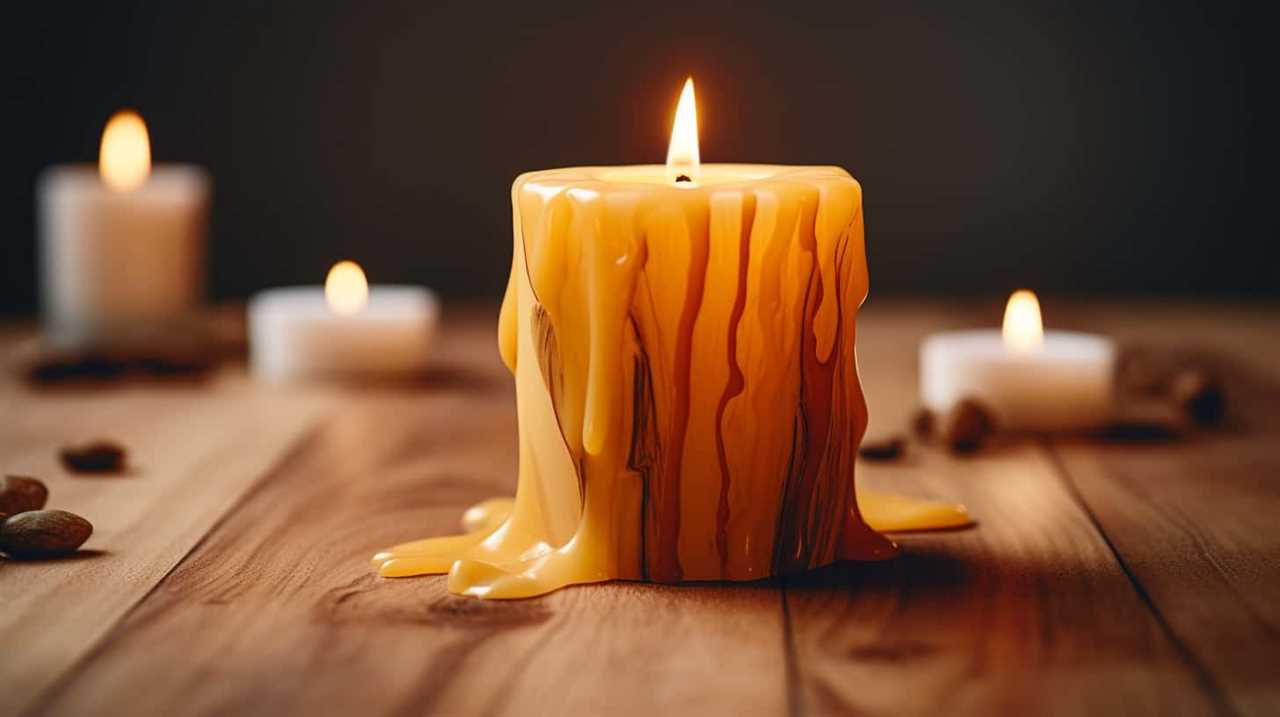
When used correctly and following safety precautions, a Plumber’s Candle can greatly contribute to the success of plumbing projects, making it an indispensable asset for professionals in the field.
I’m Jane and I love candles. I have candles everywhere in my house–in every room, on every surface. I love the smell of candles, and I love how they make my place feel warm and cozy.
Candles are really important to me. They help me relax and de-stress after a long day. They remind me of happy memories, and they make me feel calm and peaceful. I can’t imagine my life without candles!
-
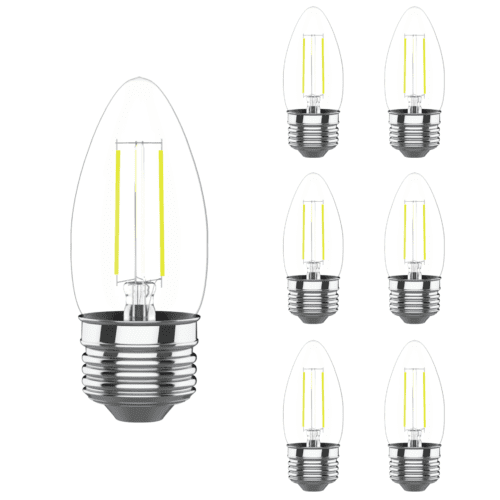
 Beginners Guides1 week ago
Beginners Guides1 week agoThe Similarities of Candle and Light Bulb Lamps
-

 Beginners Guides7 days ago
Beginners Guides7 days agoHow to Determine If Candles Will Melt Outside
-

 Beginners Guides3 months ago
Beginners Guides3 months agoHow To Burn A Candle Without A Wick
-
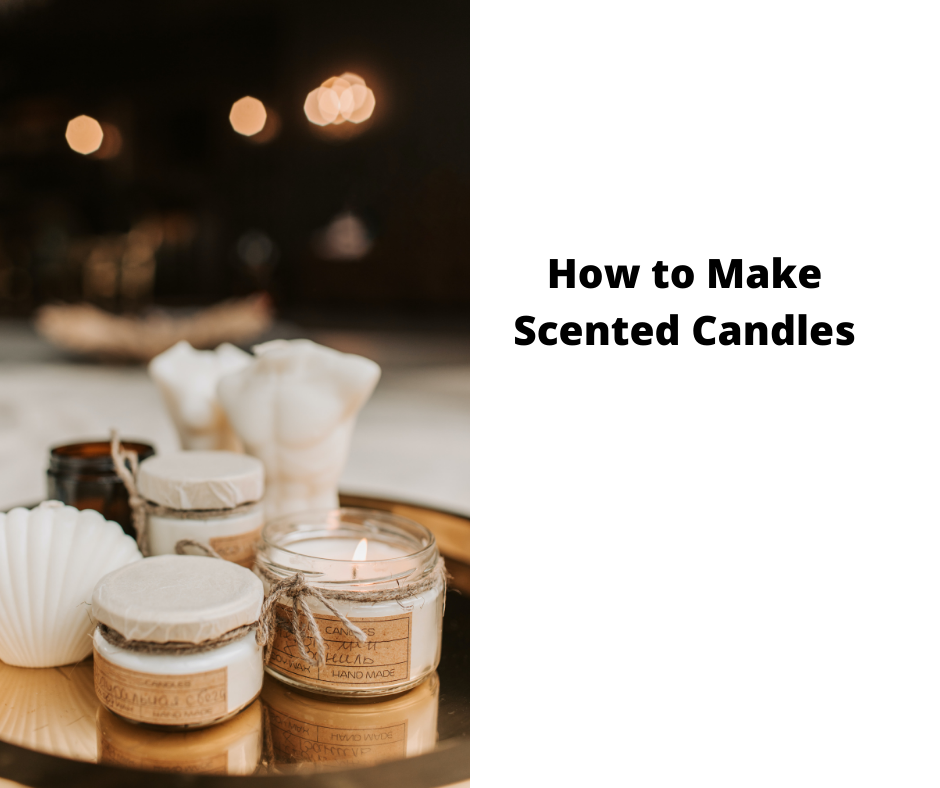
 Candles3 weeks ago
Candles3 weeks agoHow to Make Scented Candles
-

 Beginners Guides3 weeks ago
Beginners Guides3 weeks agoAre Yankee Candles Vegan?
-
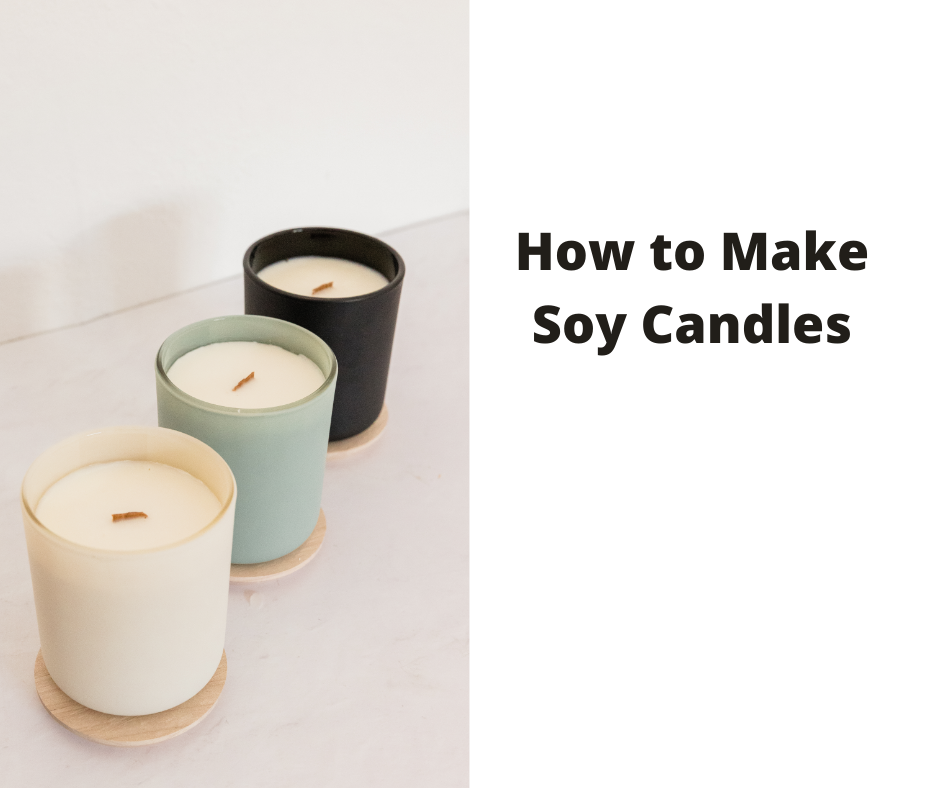
 Beginners Guides3 weeks ago
Beginners Guides3 weeks agoHow to Make Soy Candles
-

 Beginners Guides1 month ago
Beginners Guides1 month agoHow to Make Candles in 5 Easy Steps
-
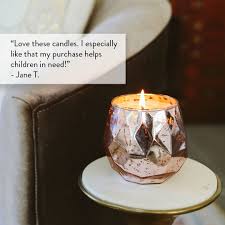
 Beginners Guides7 days ago
Beginners Guides7 days agoWhy is My Candle Not Sticking to the Glass?




